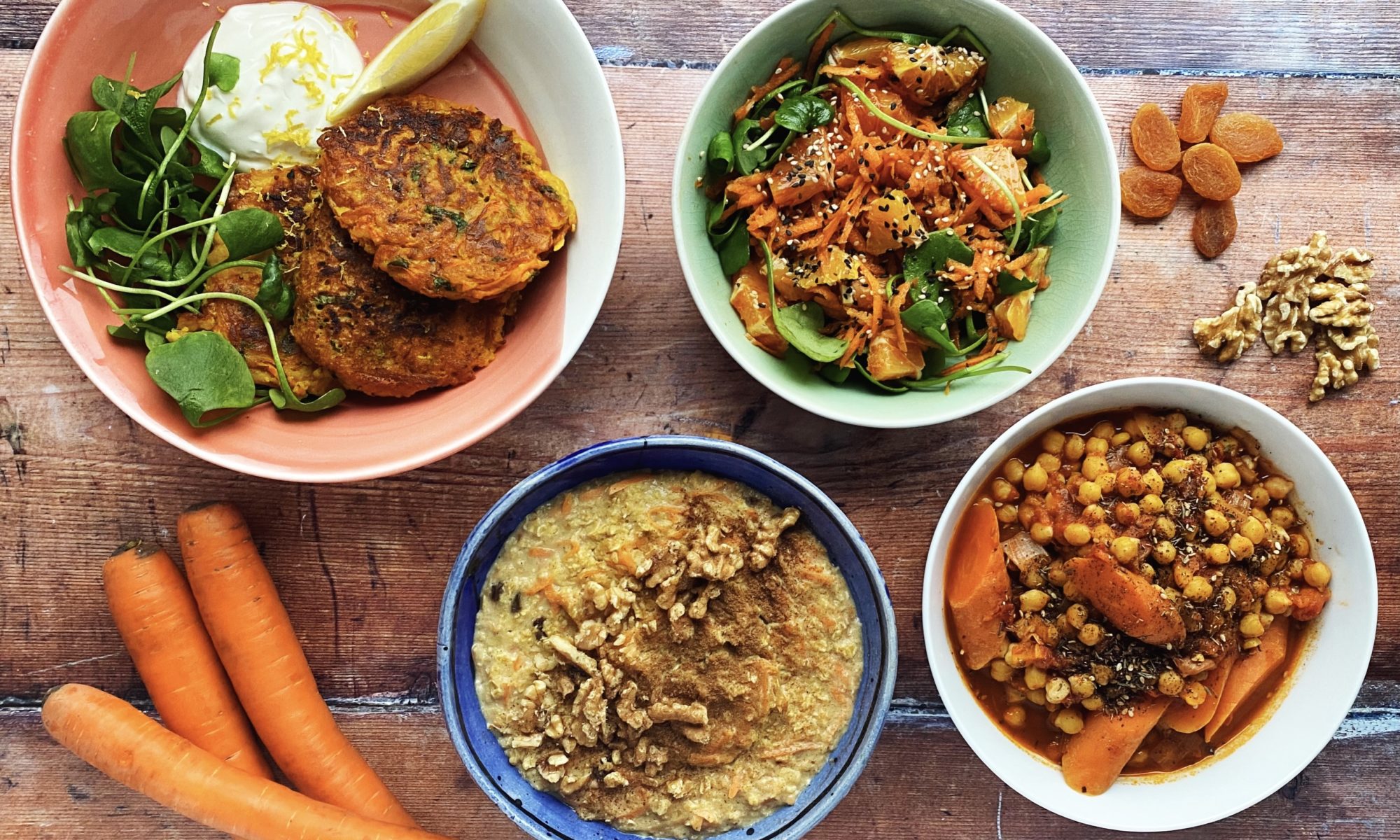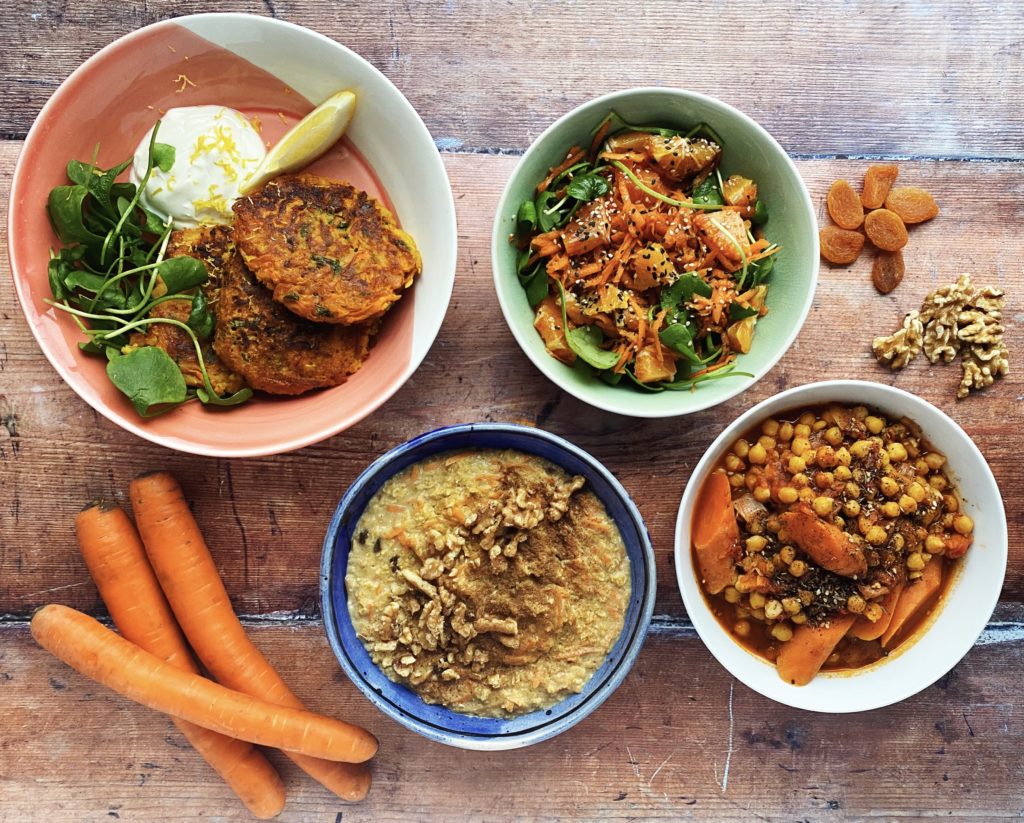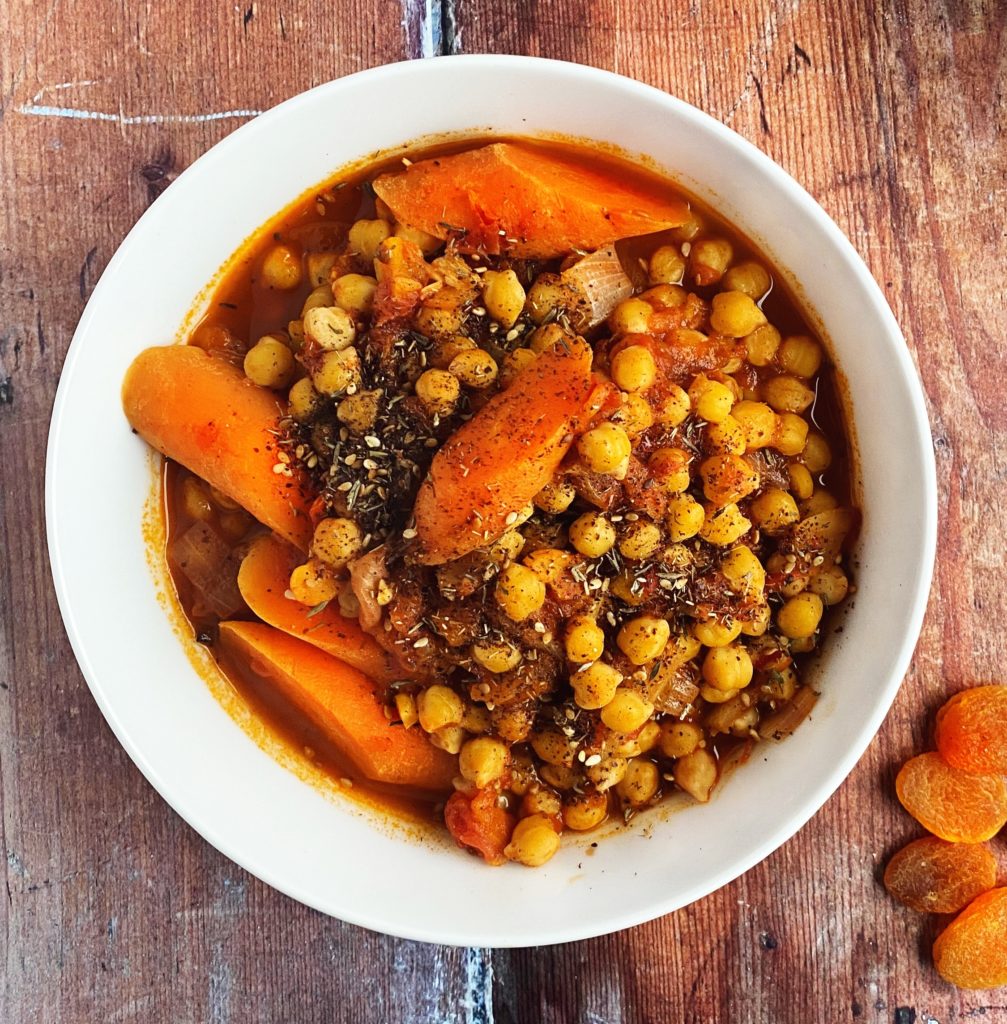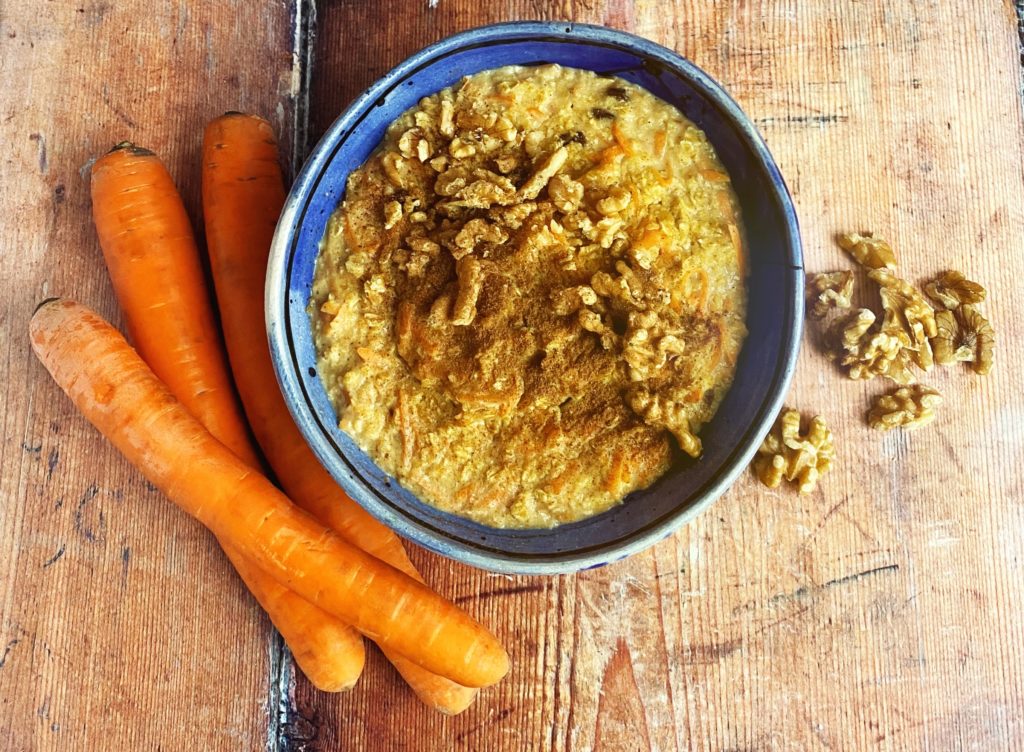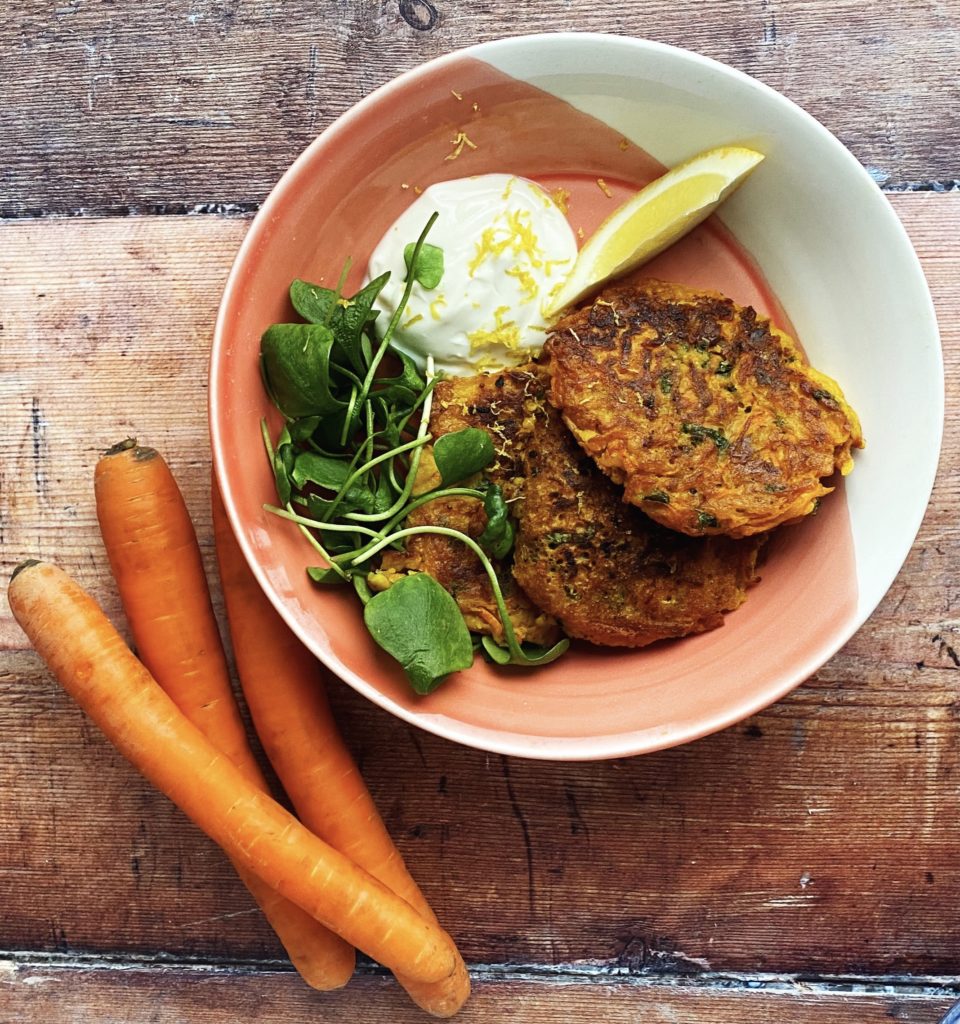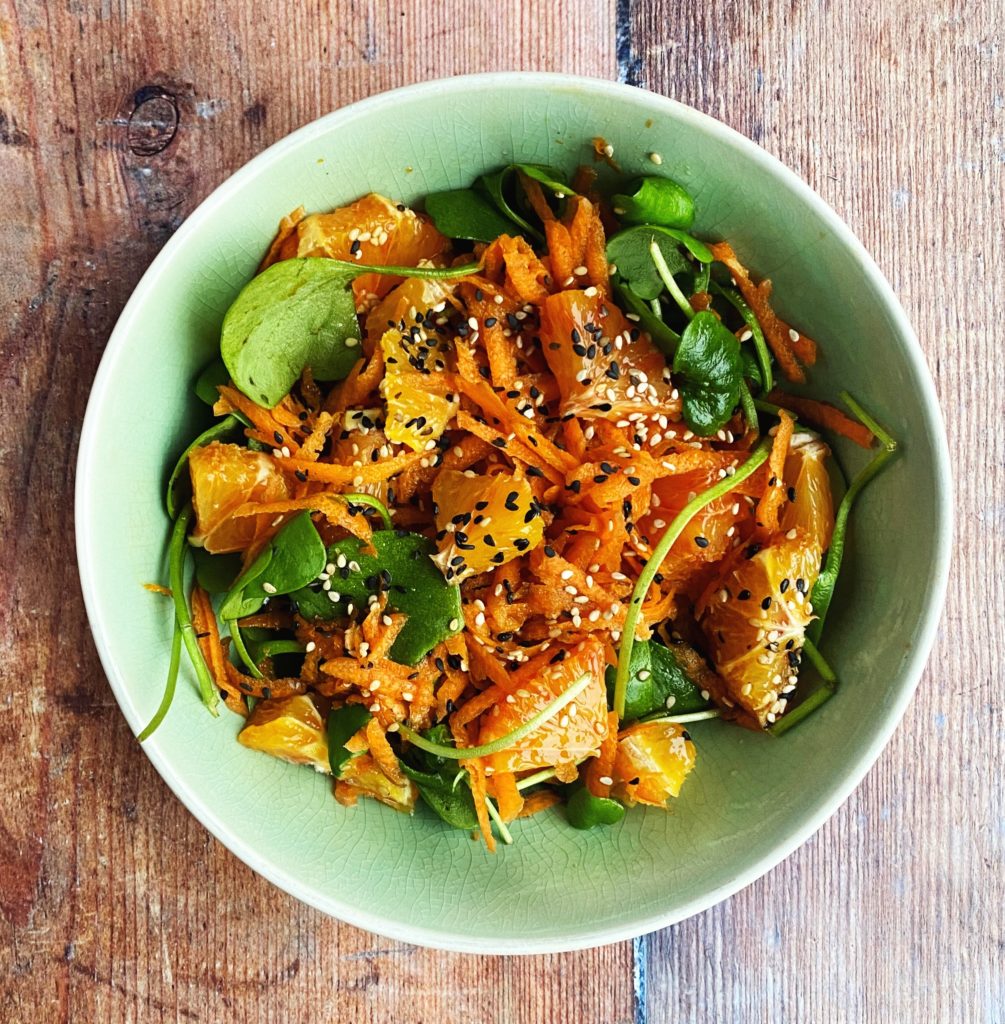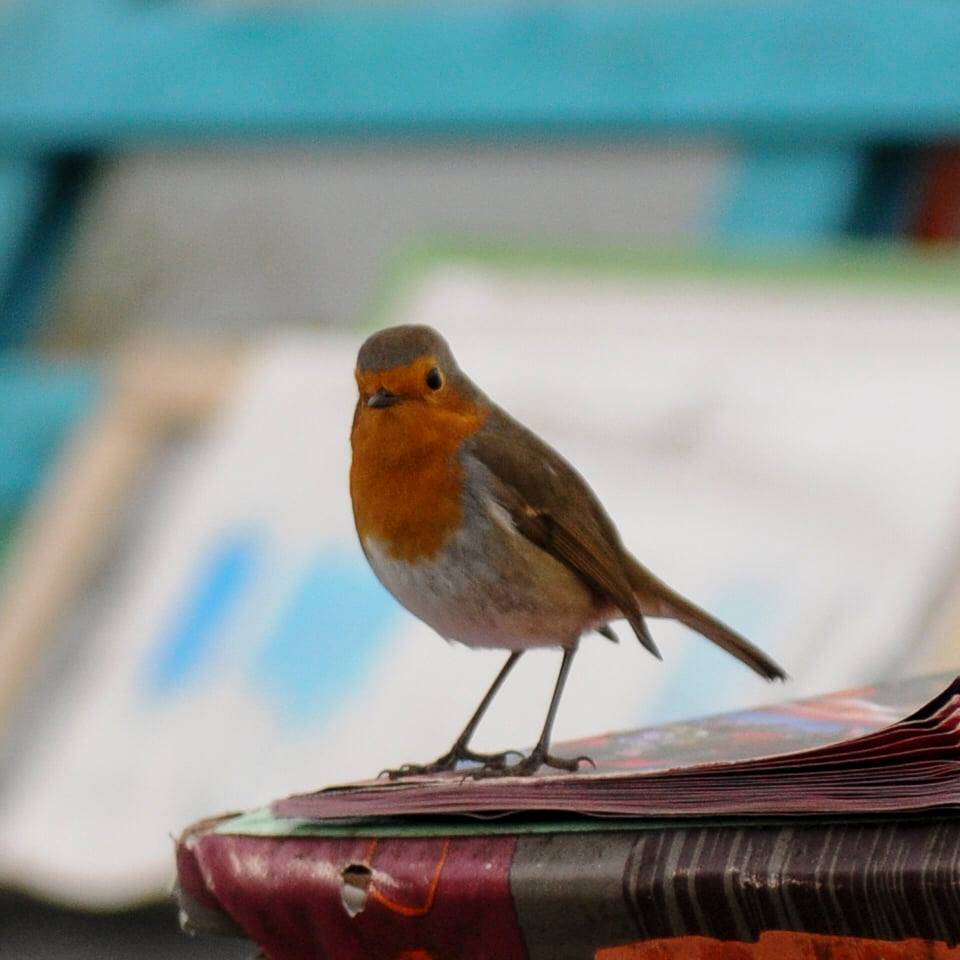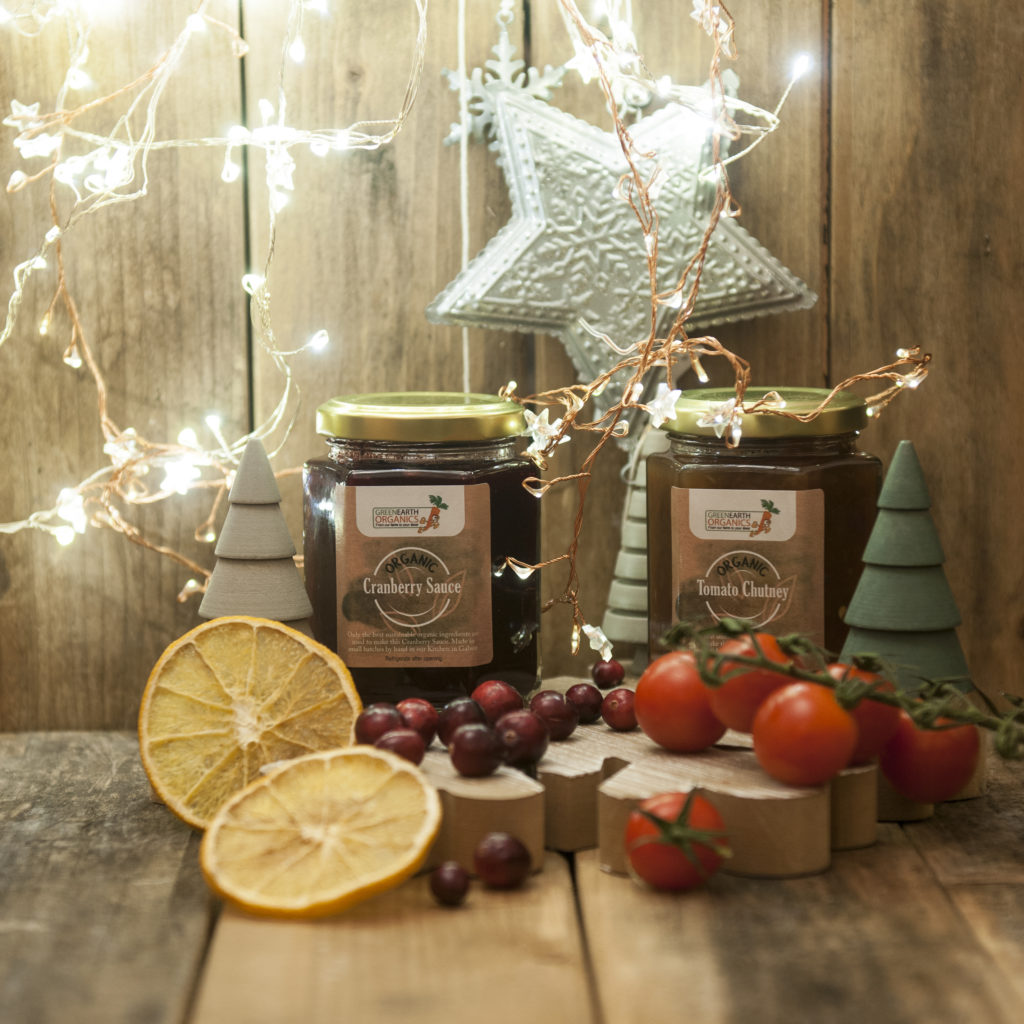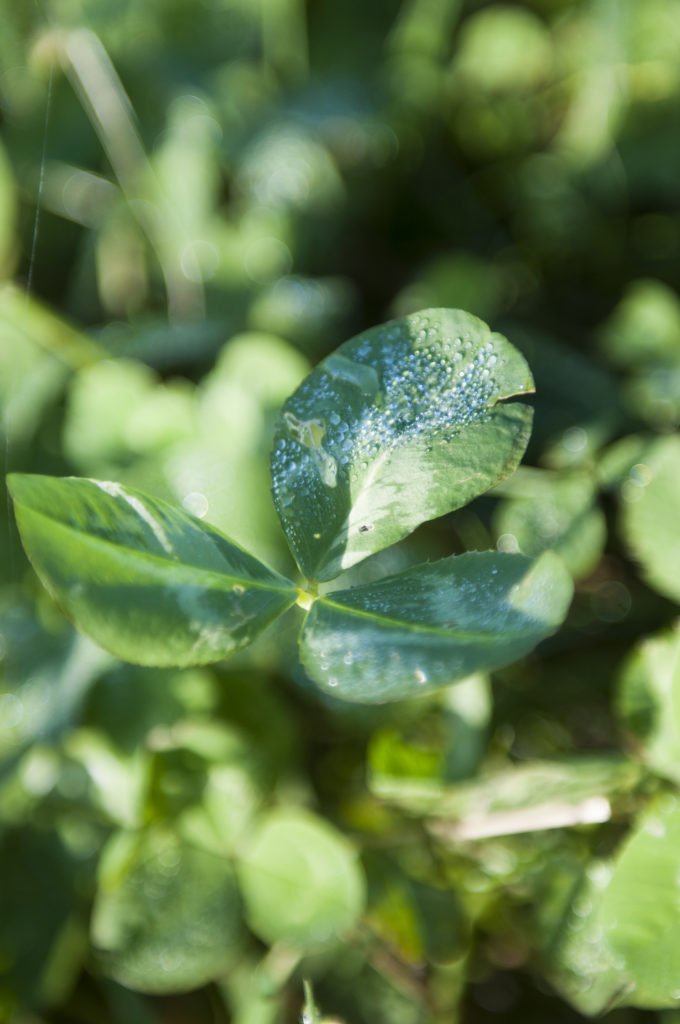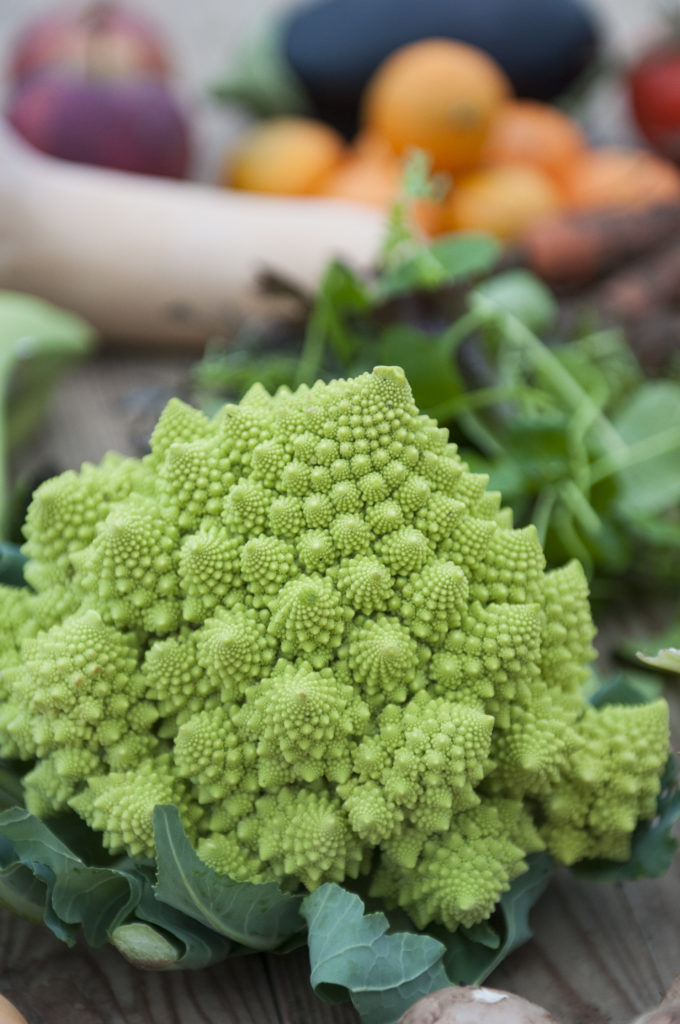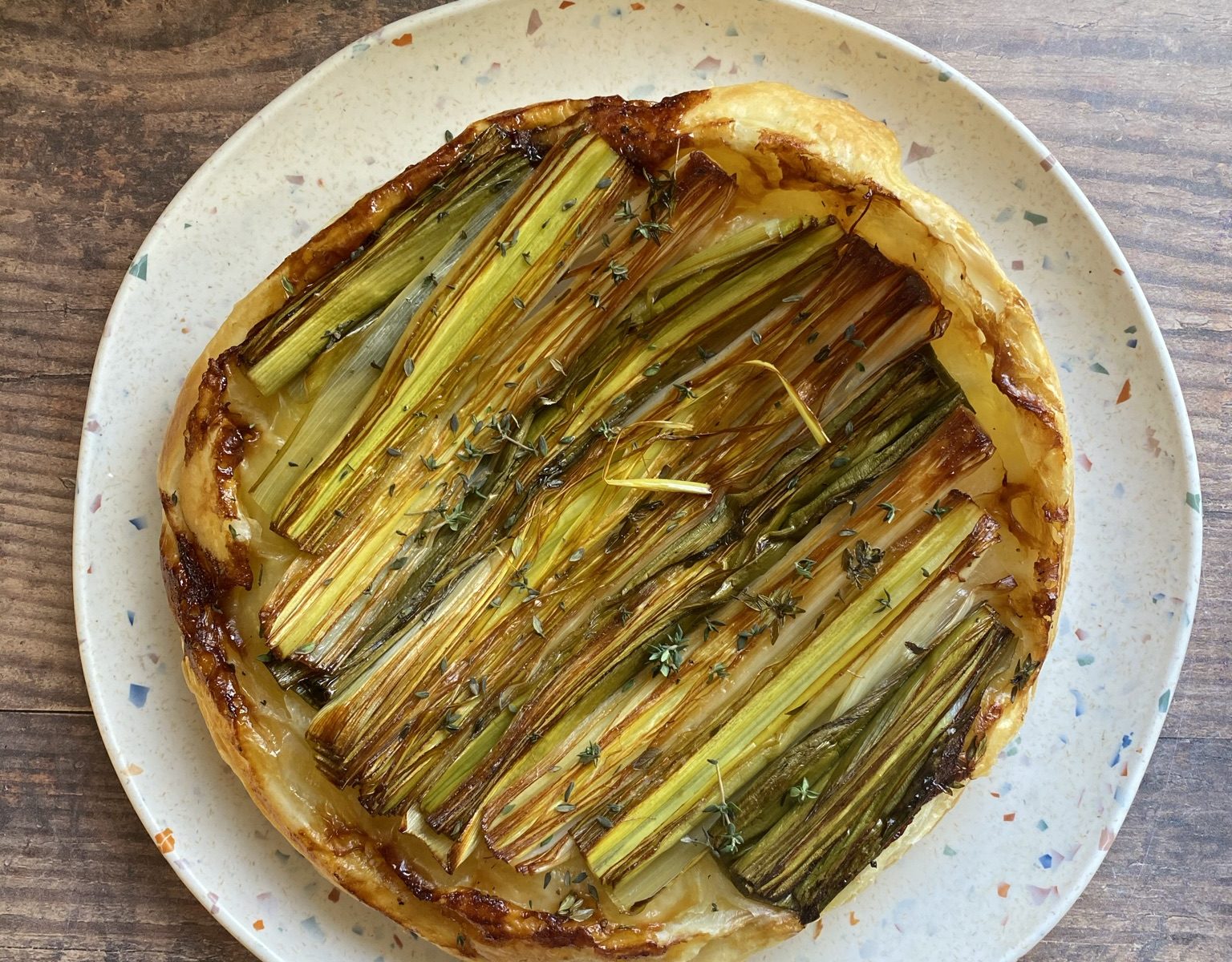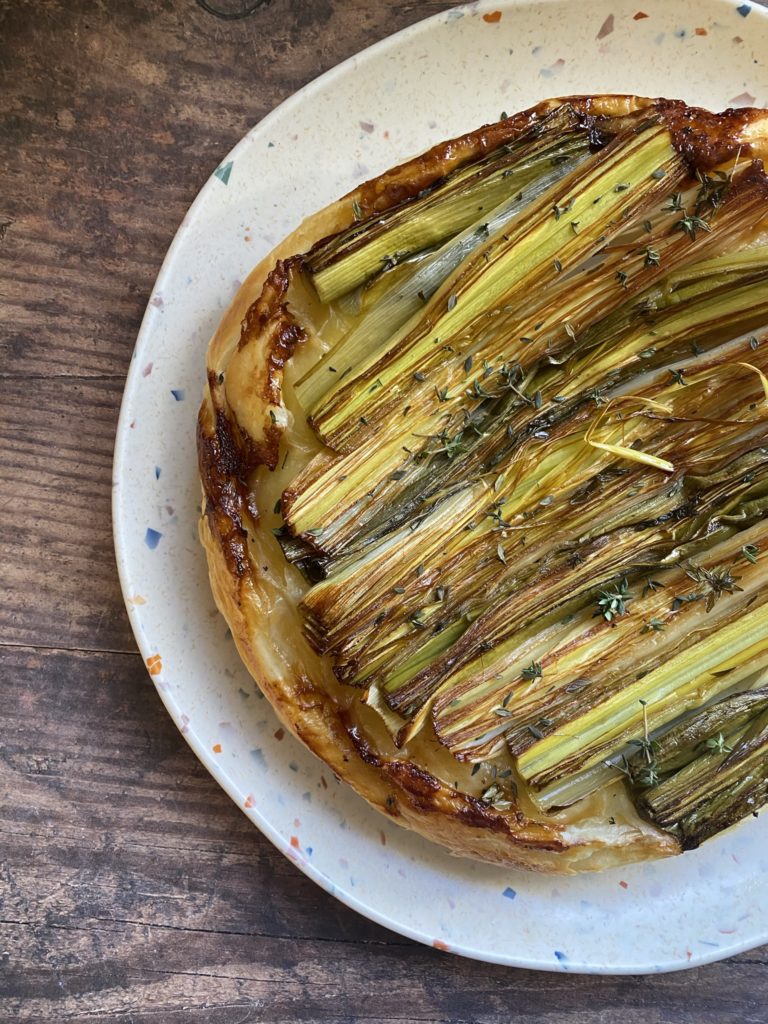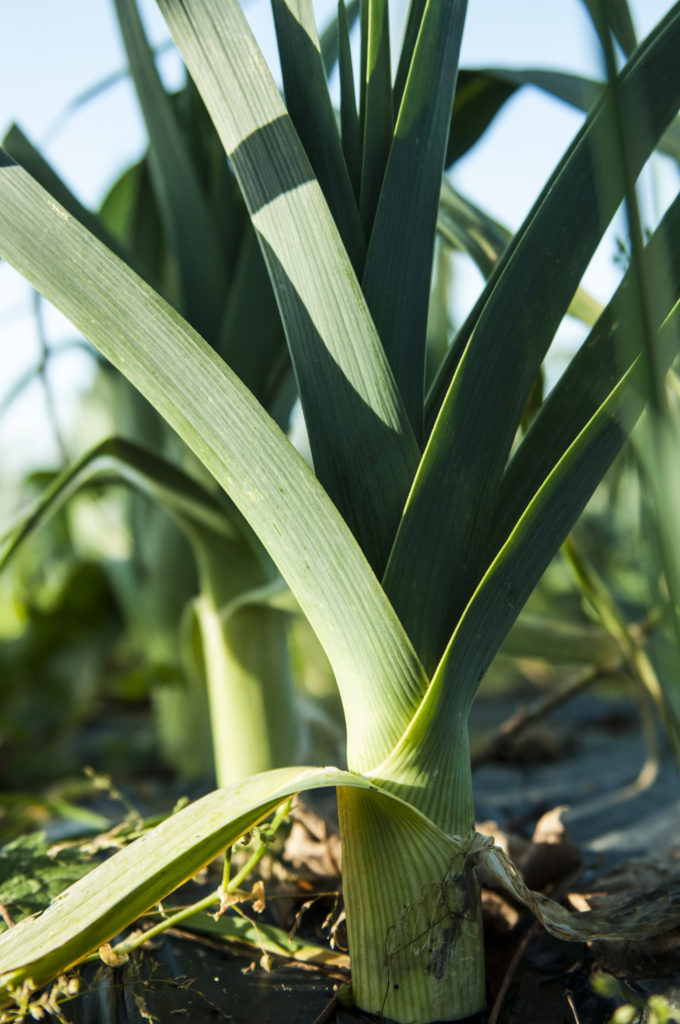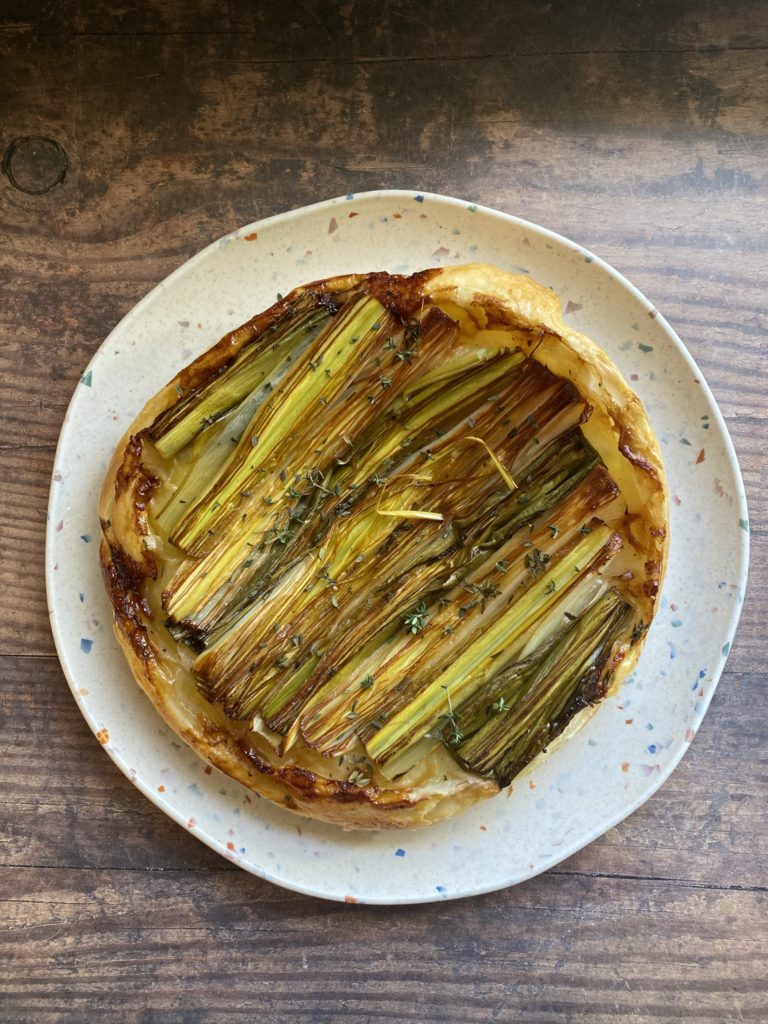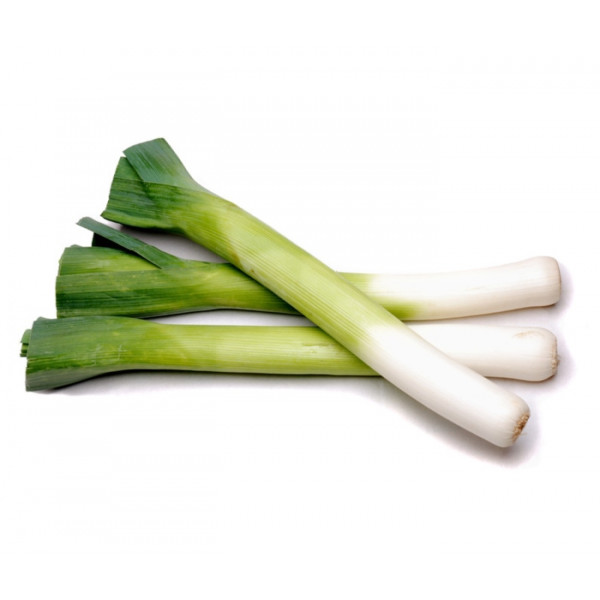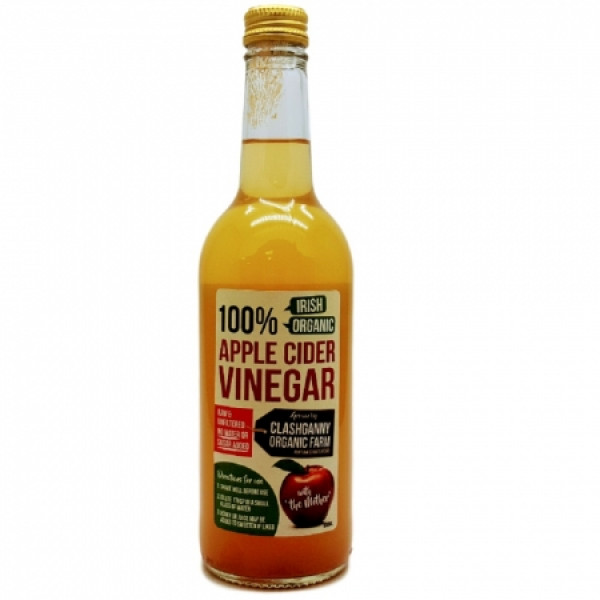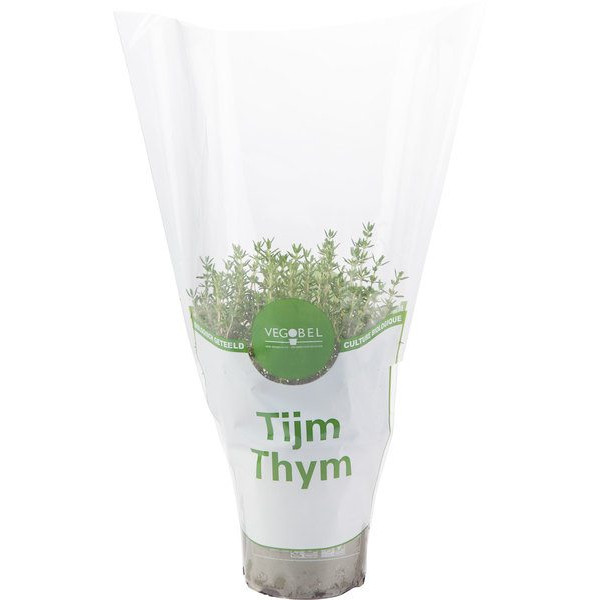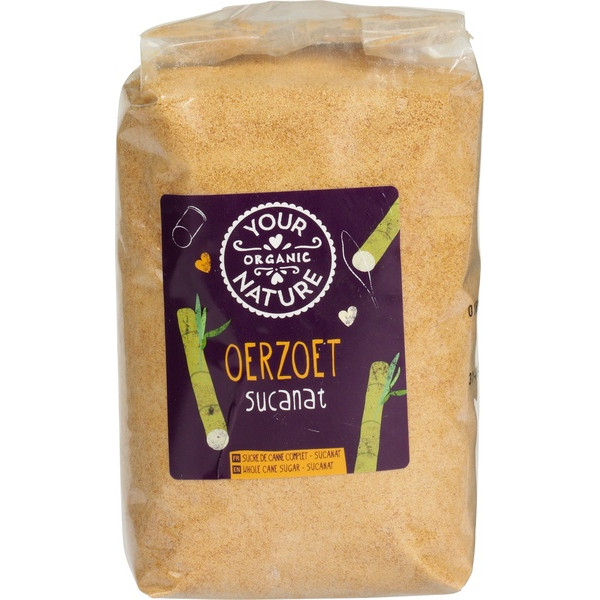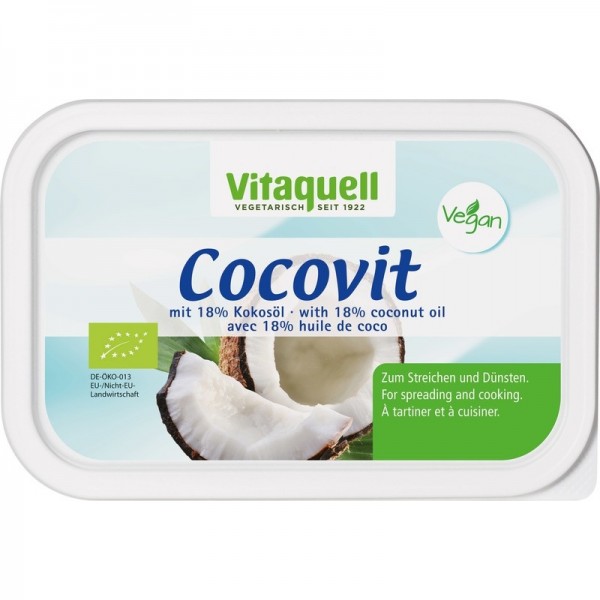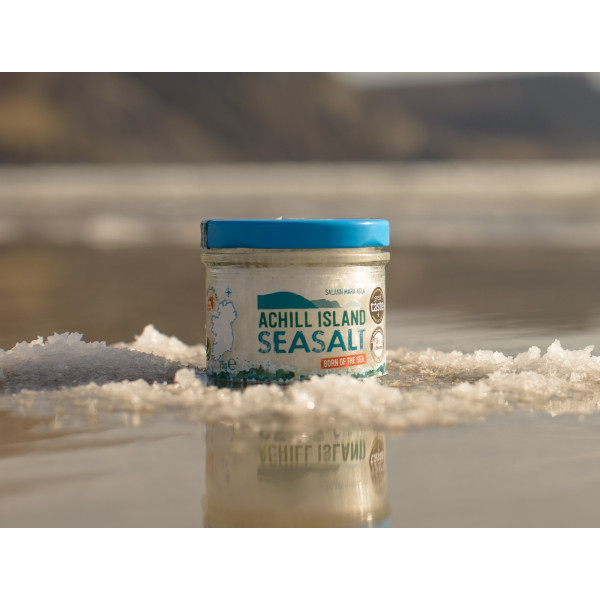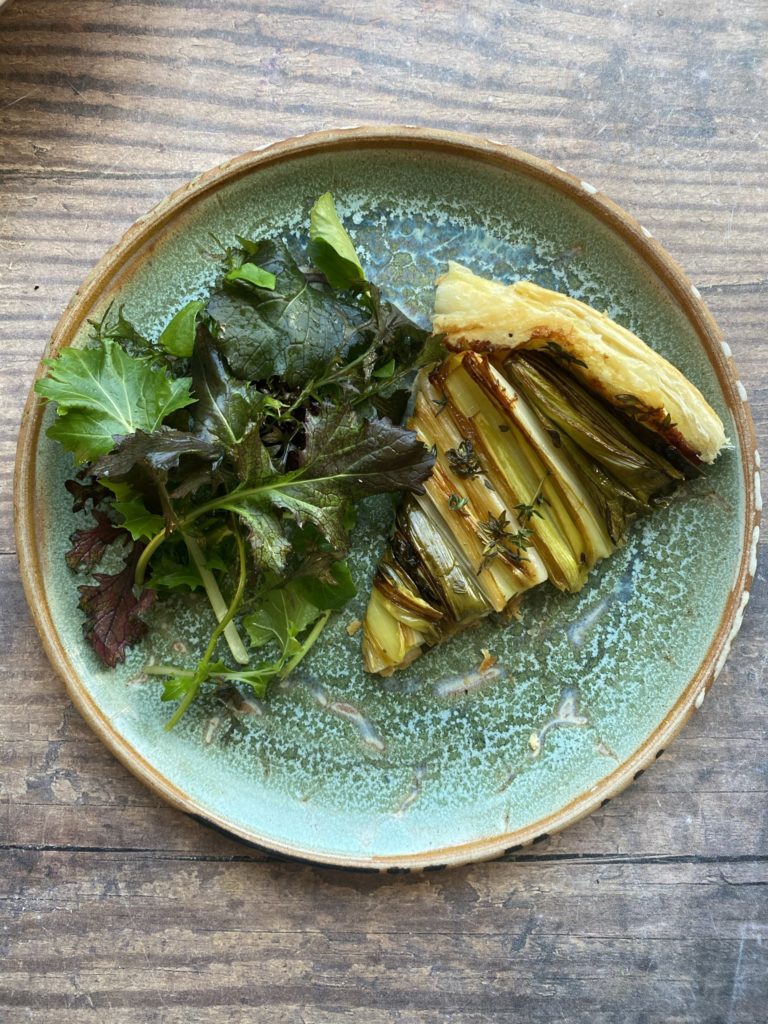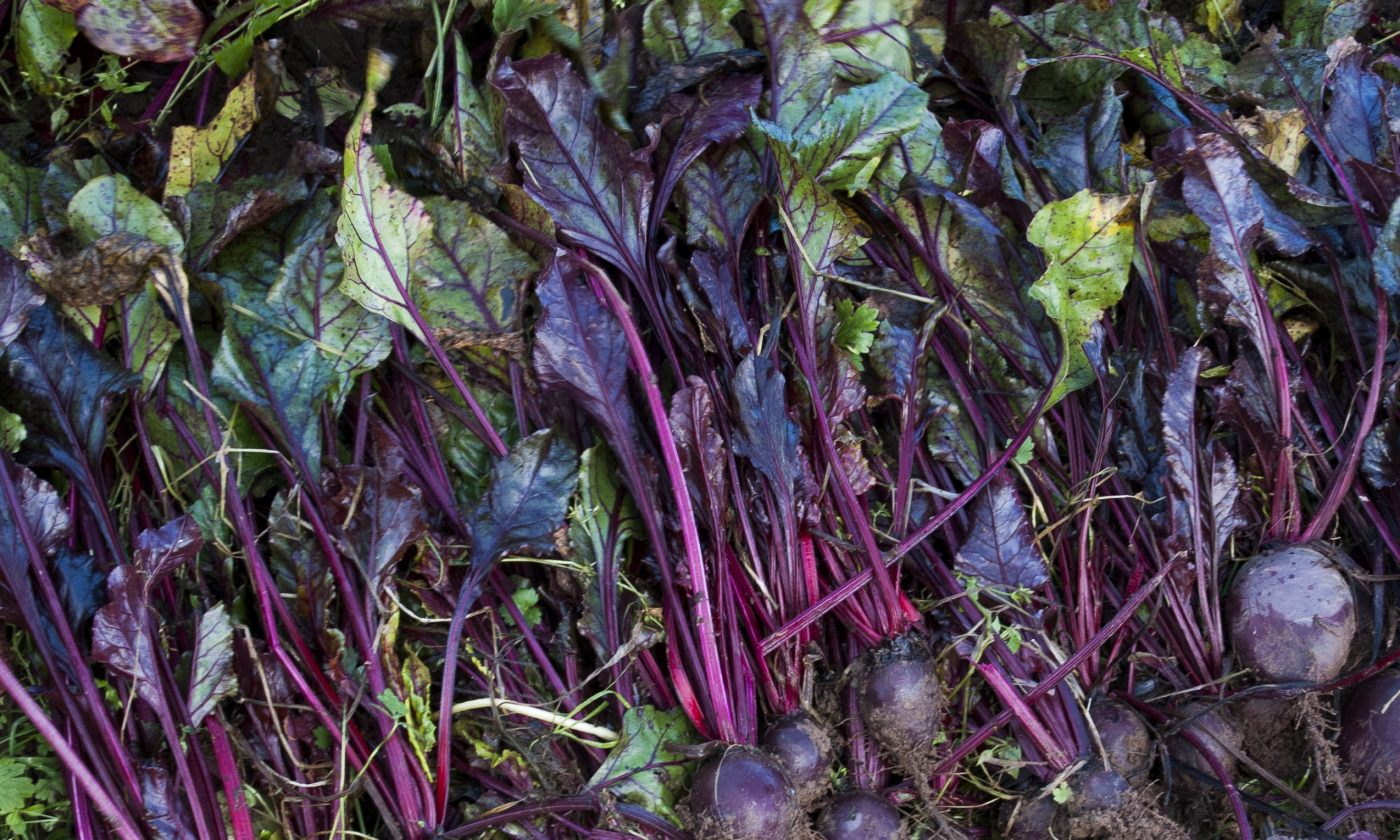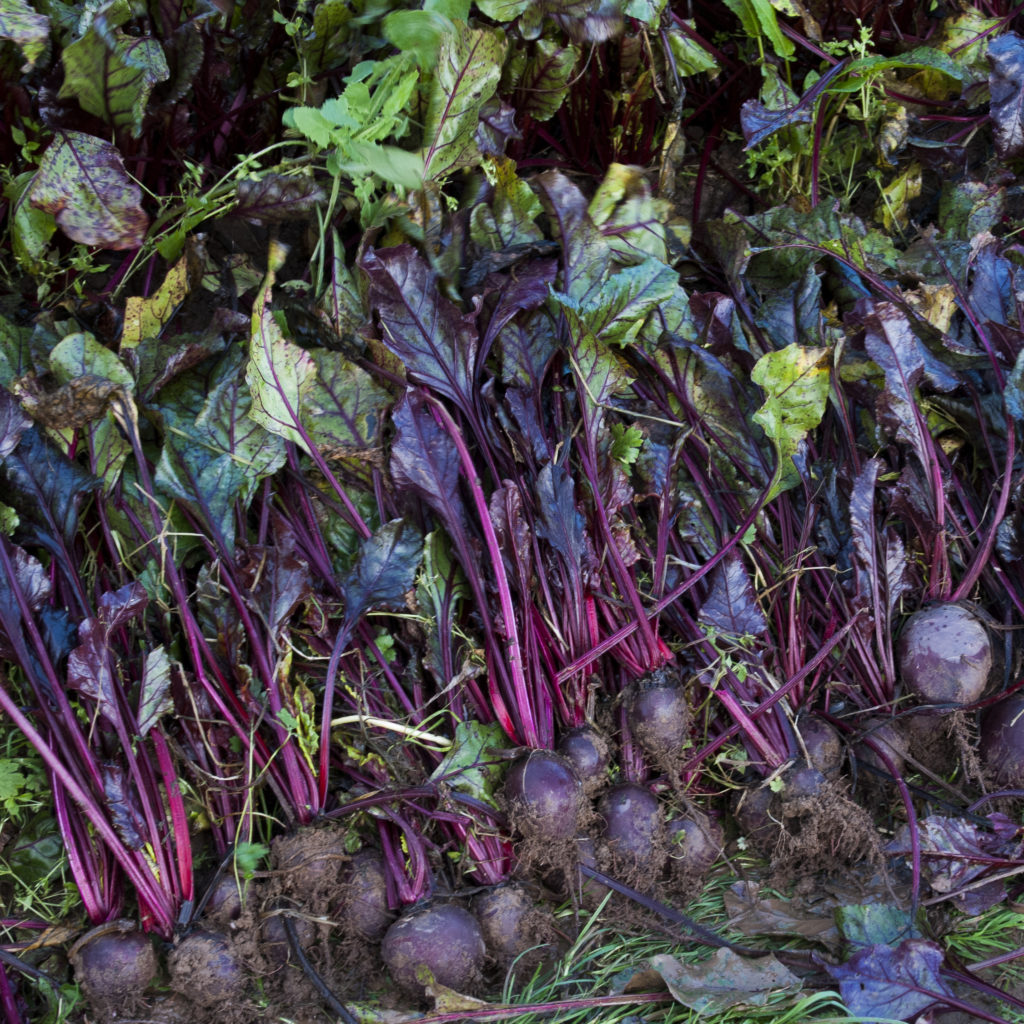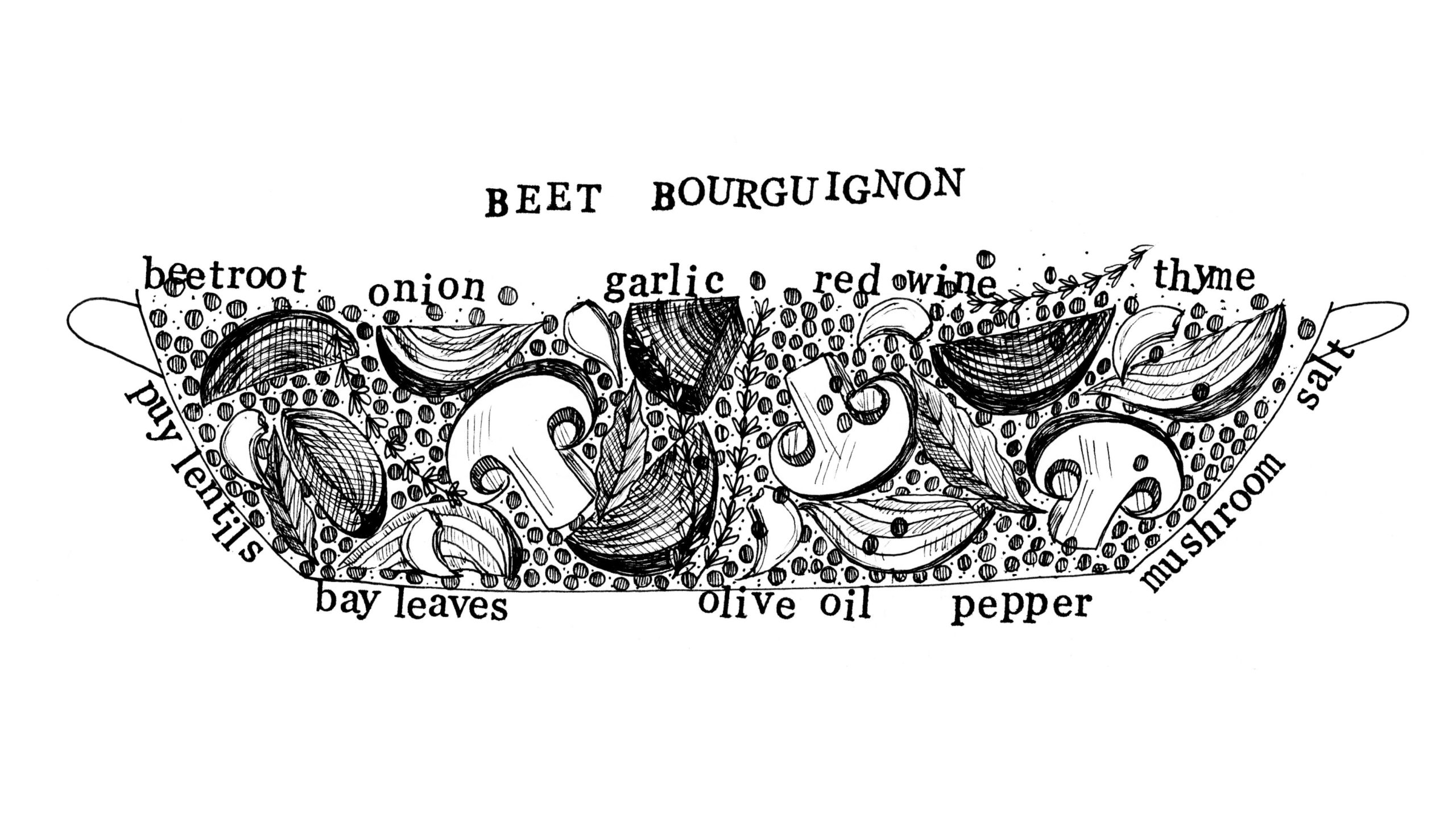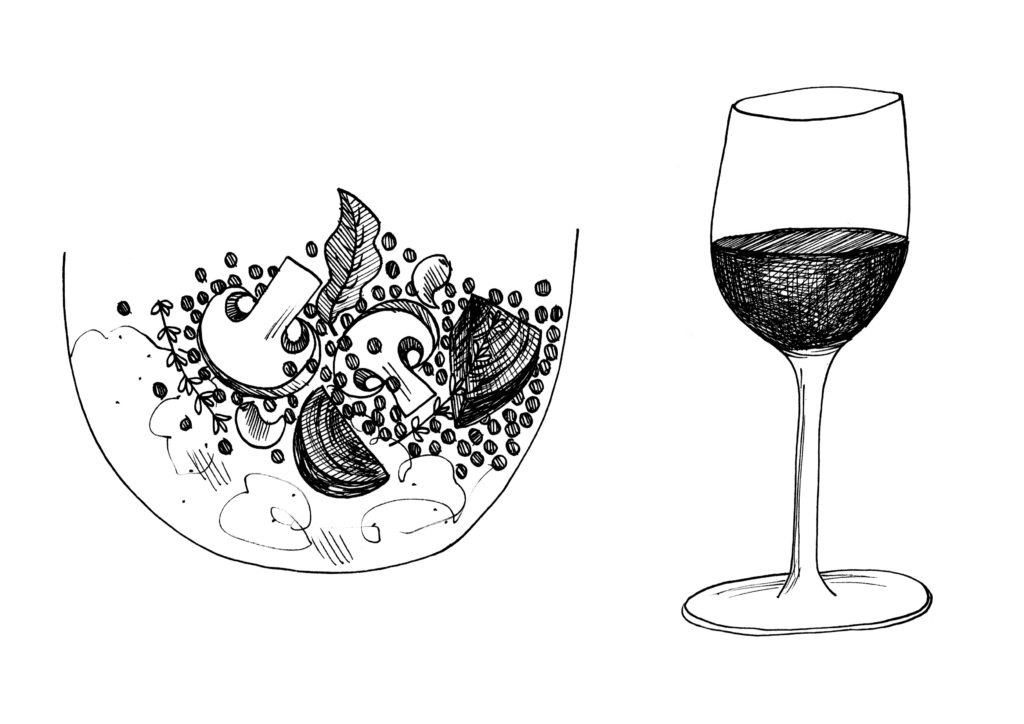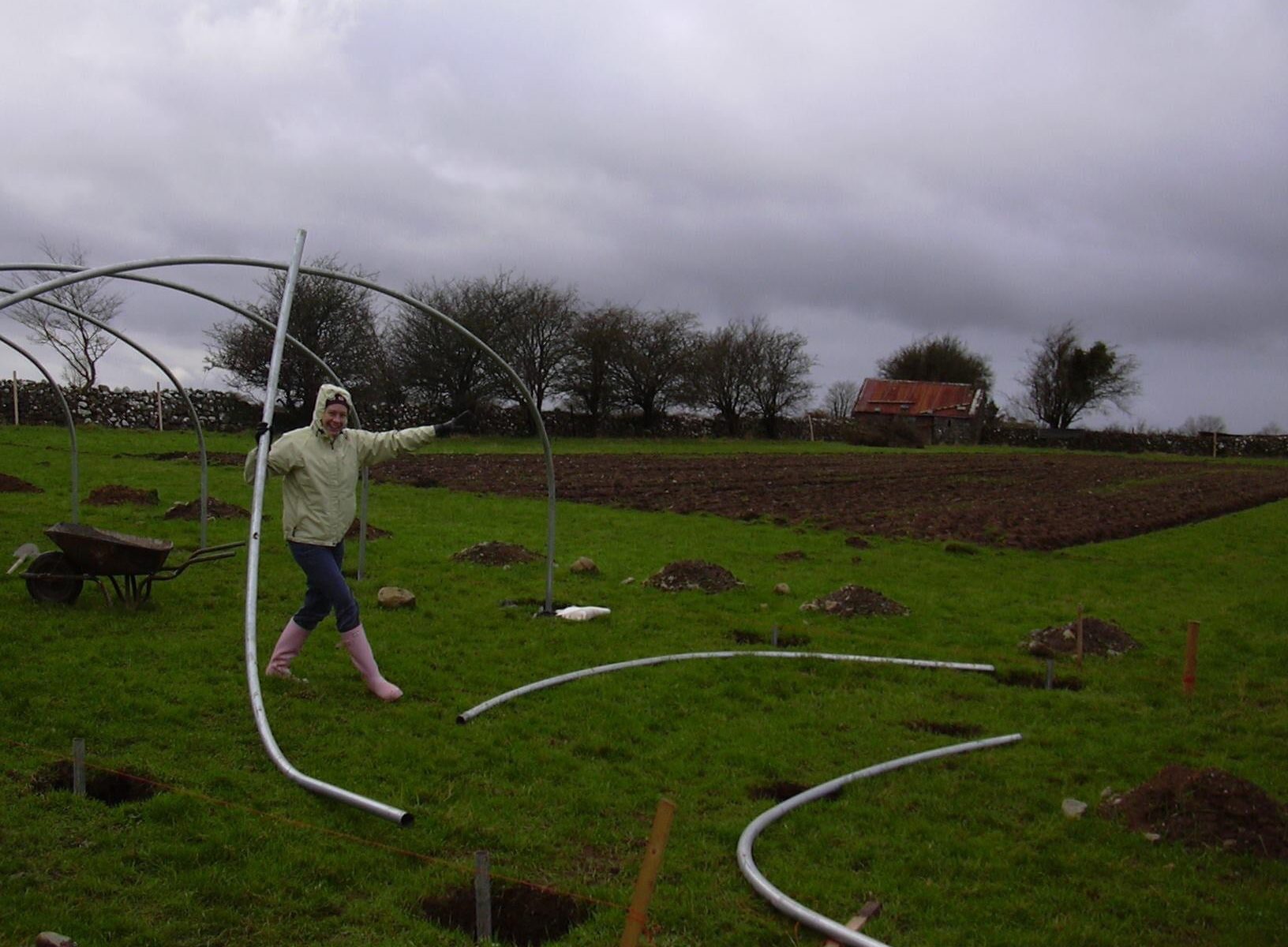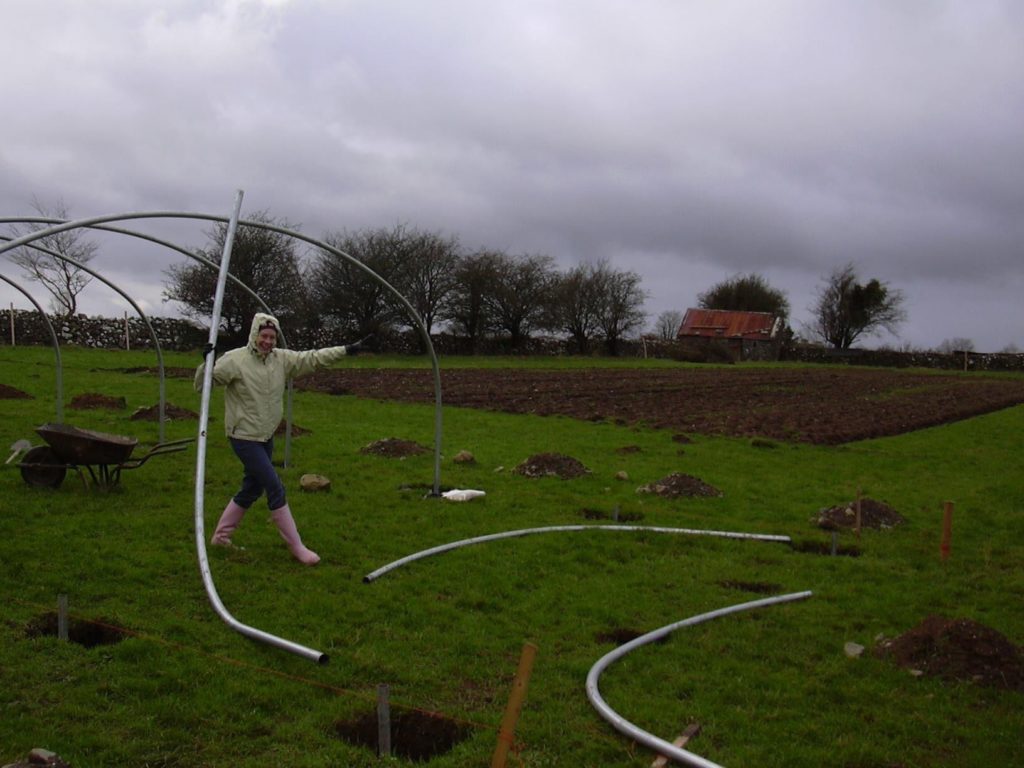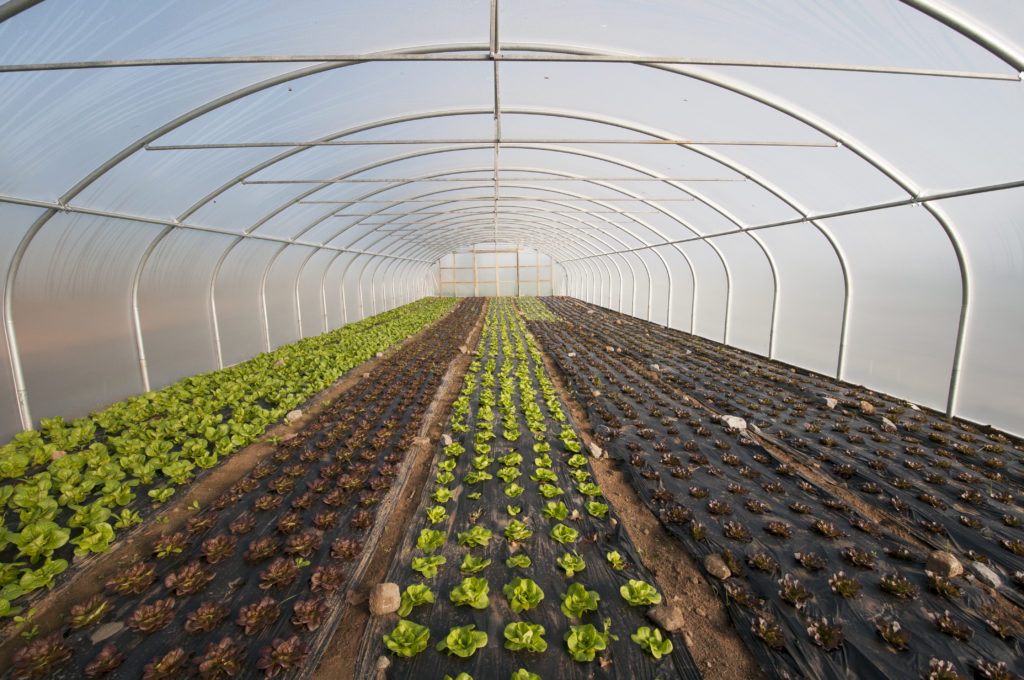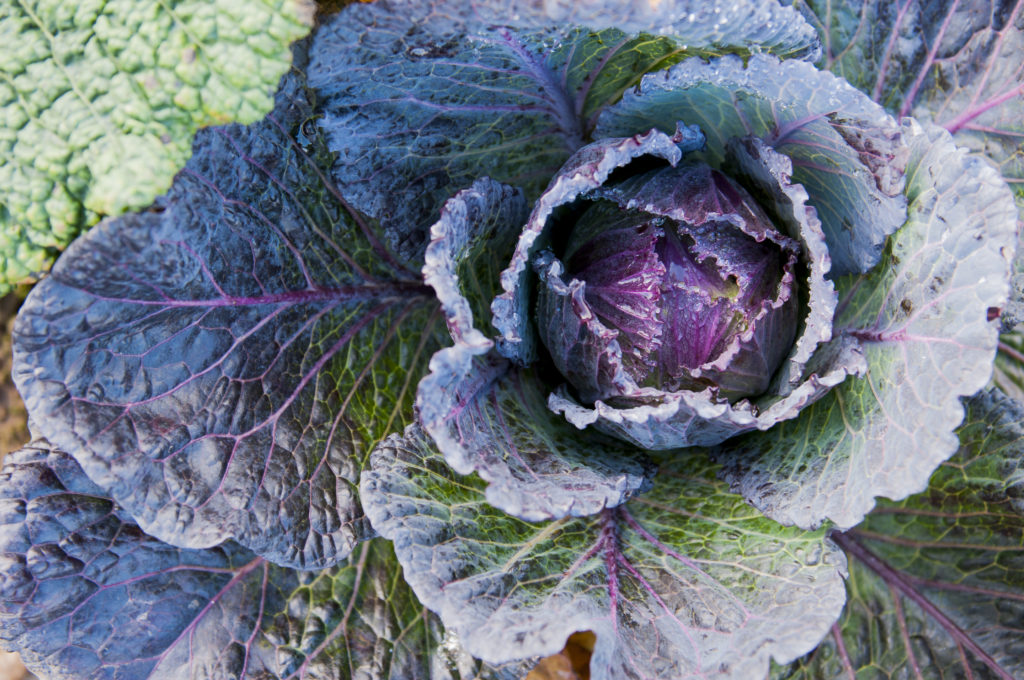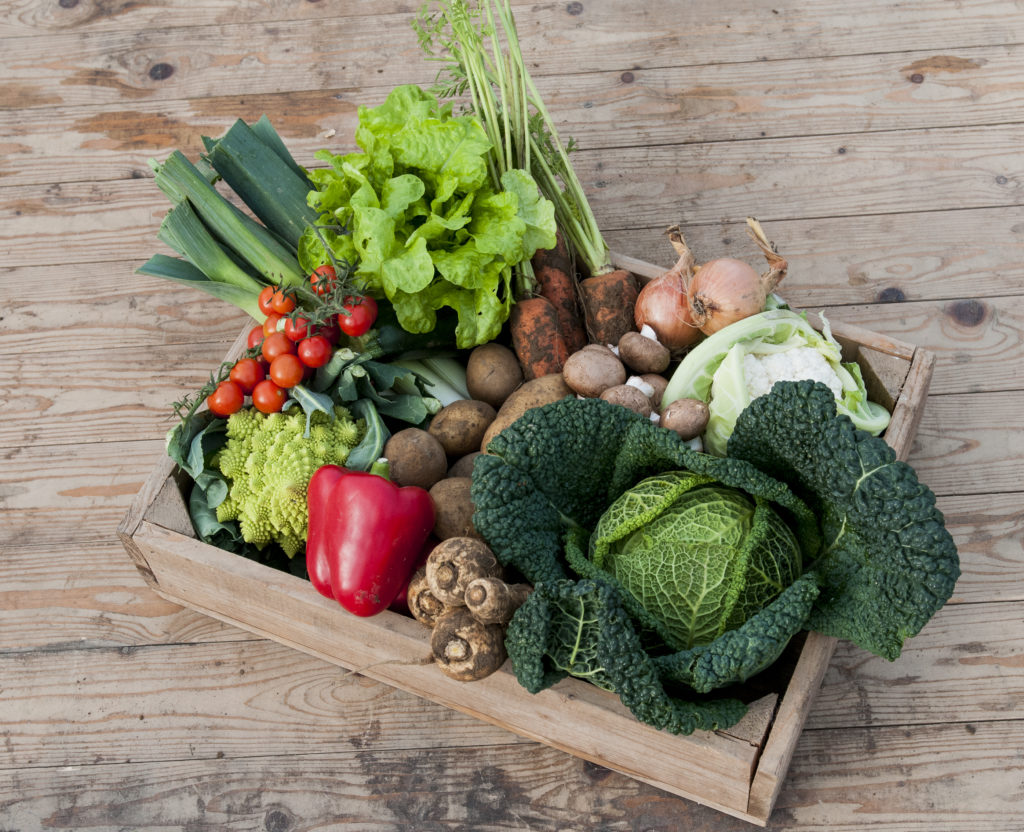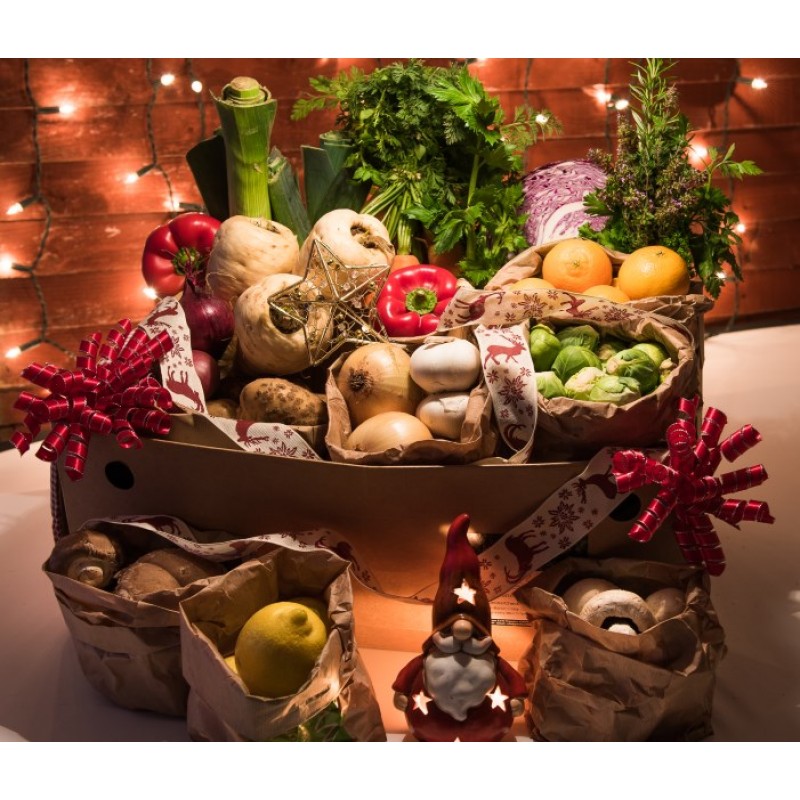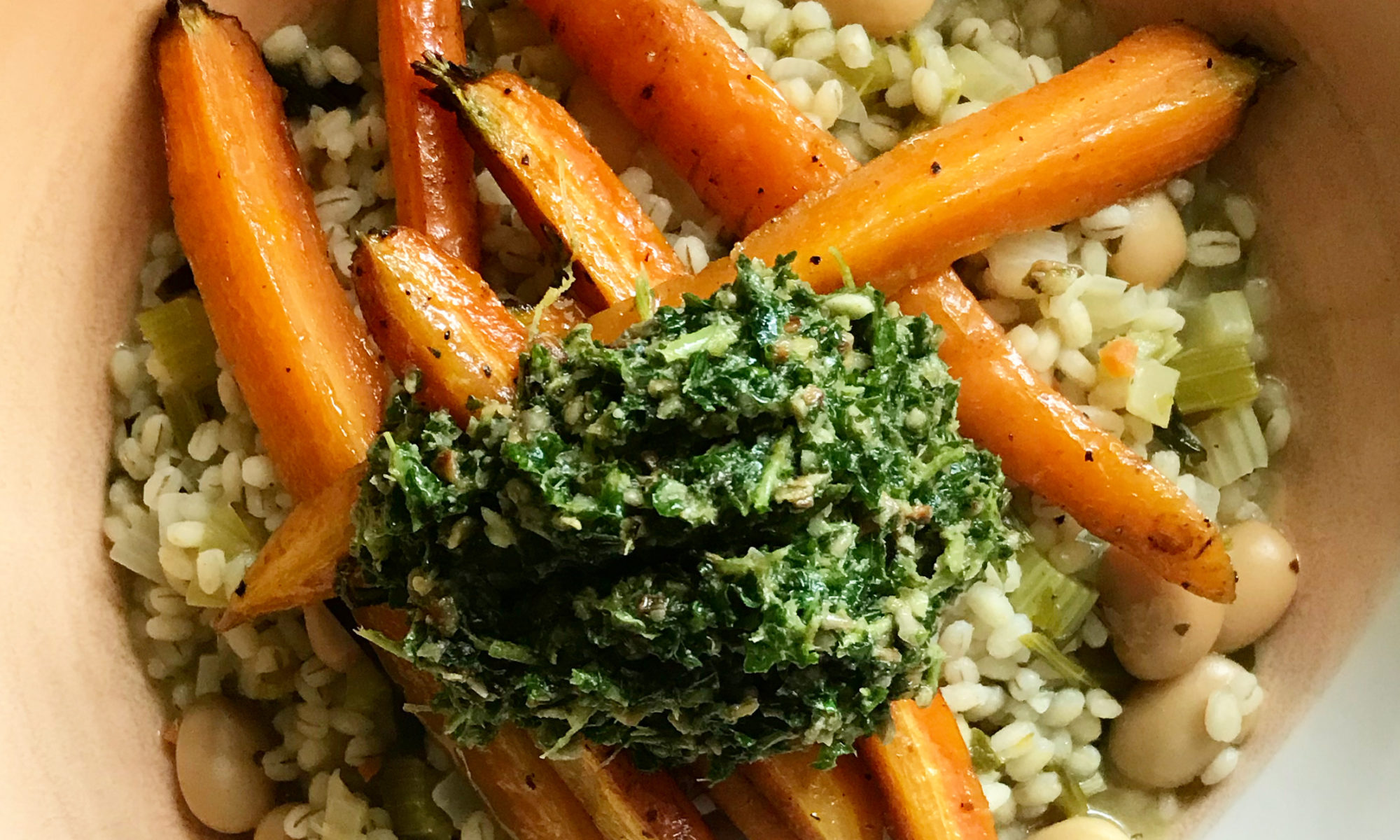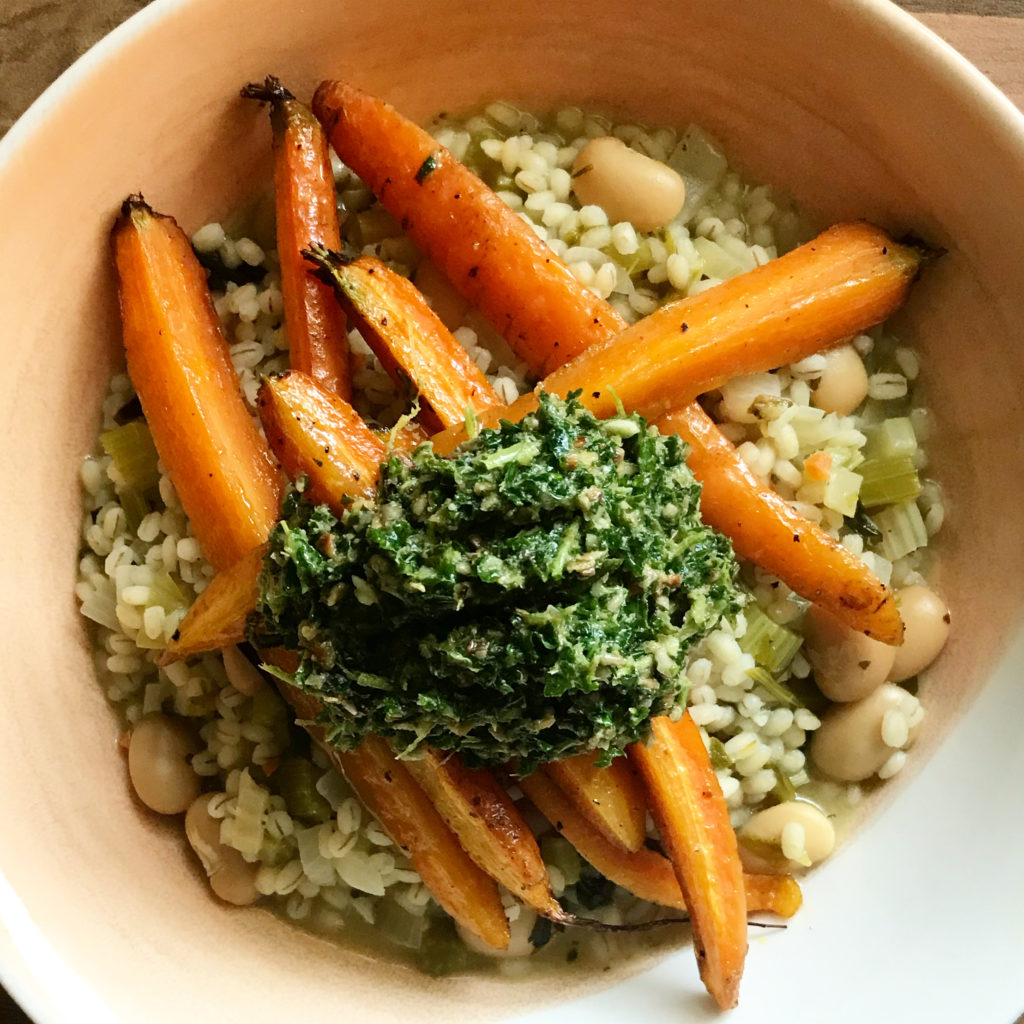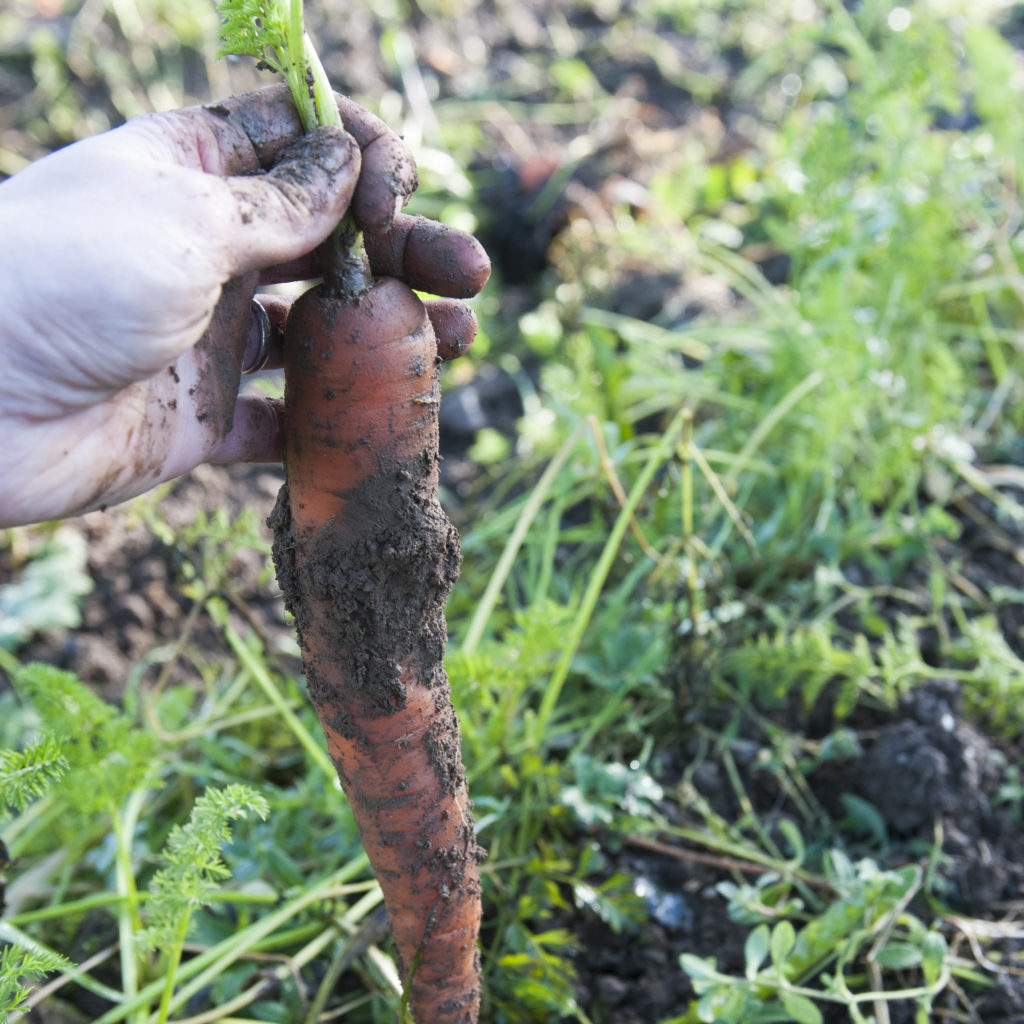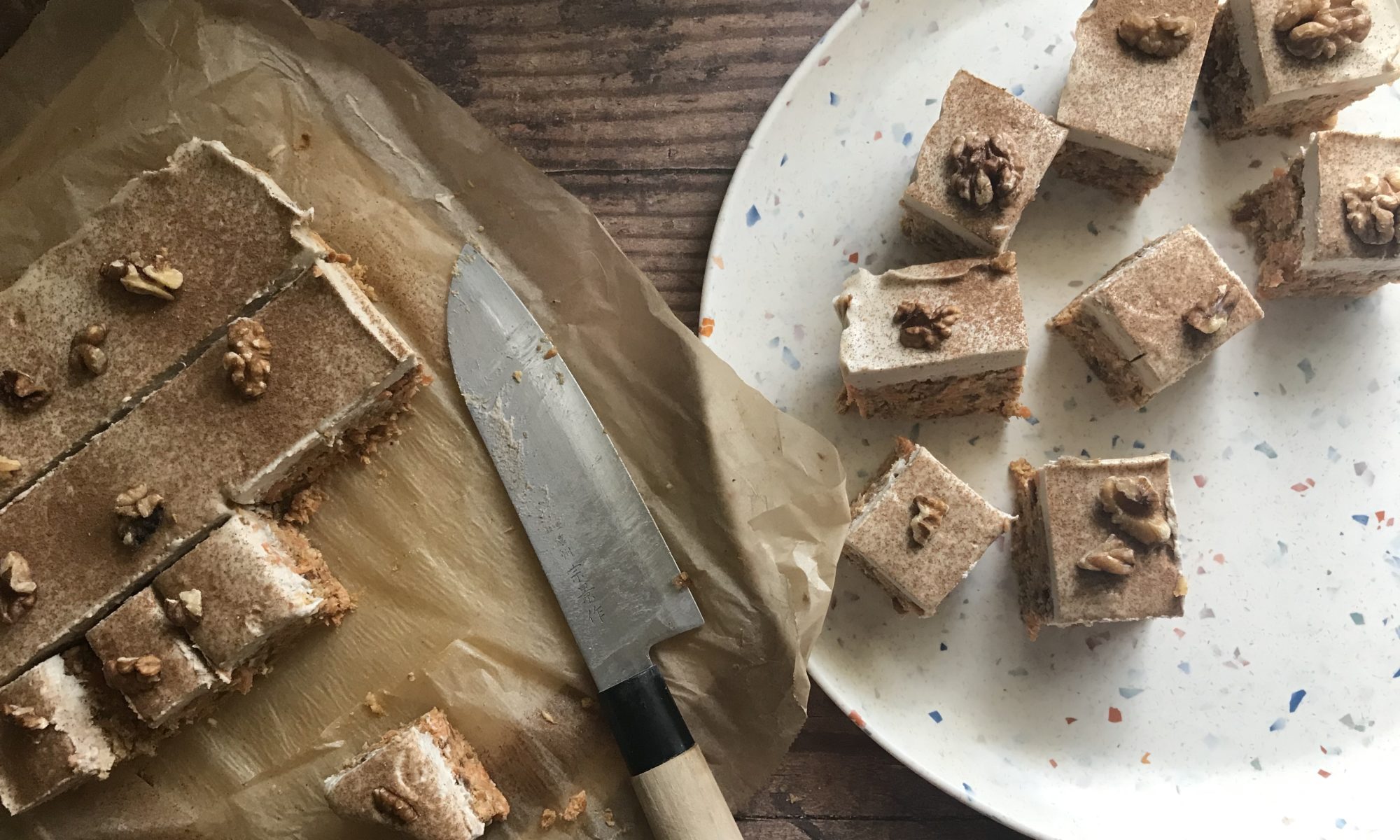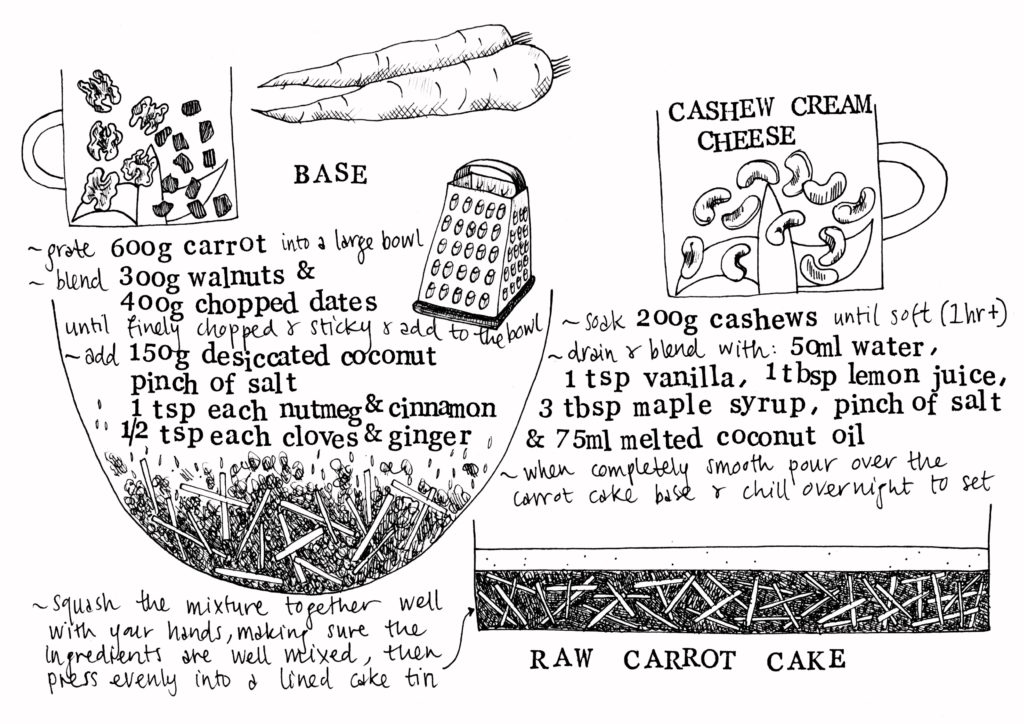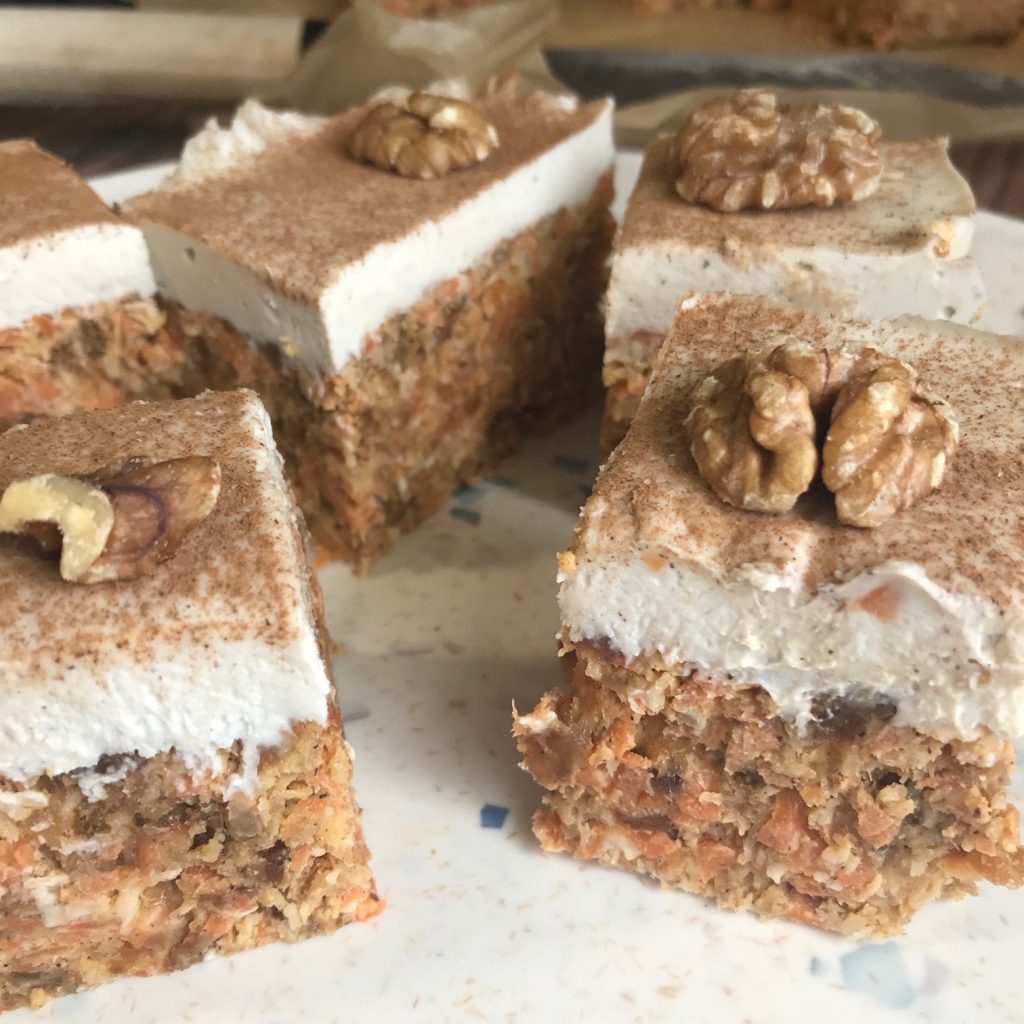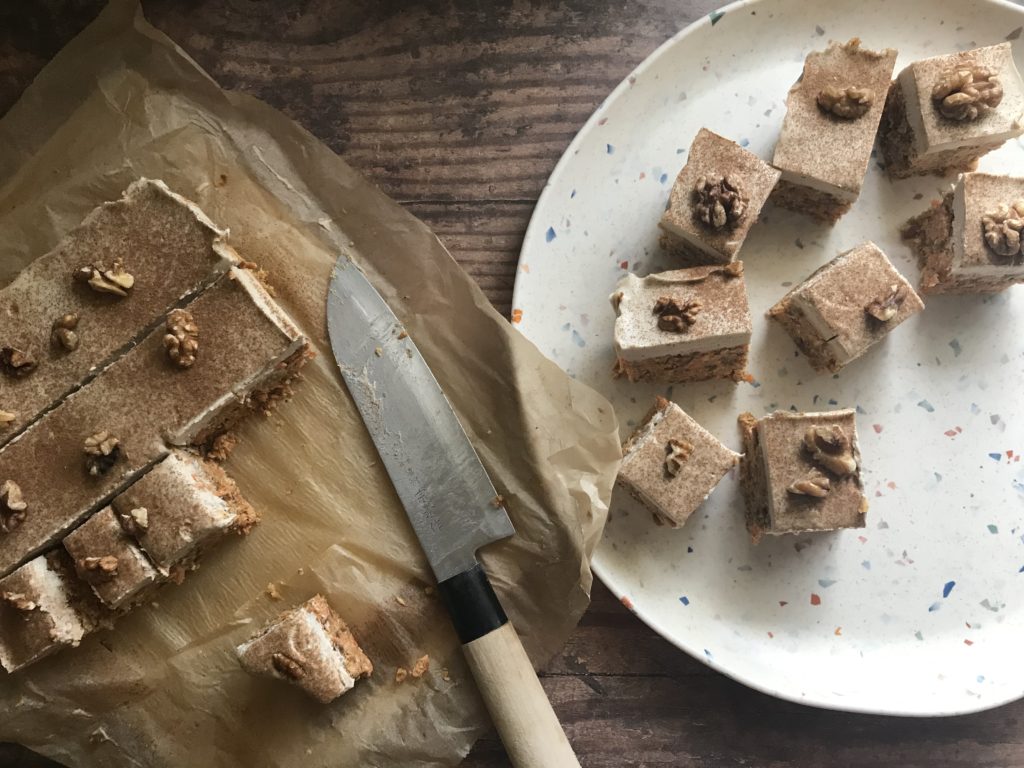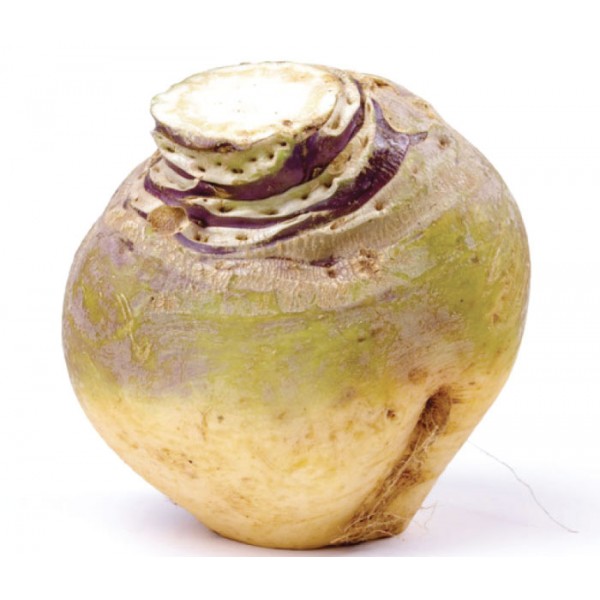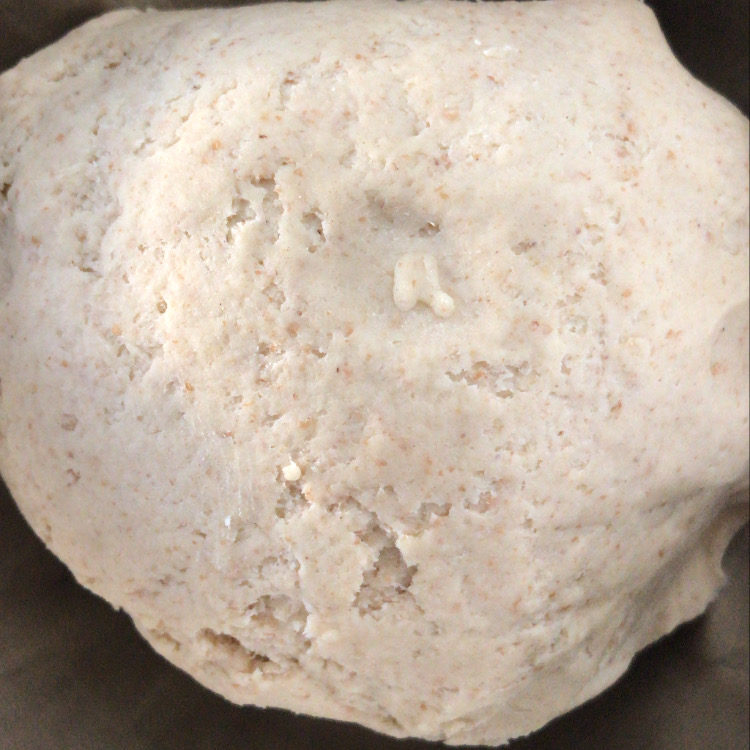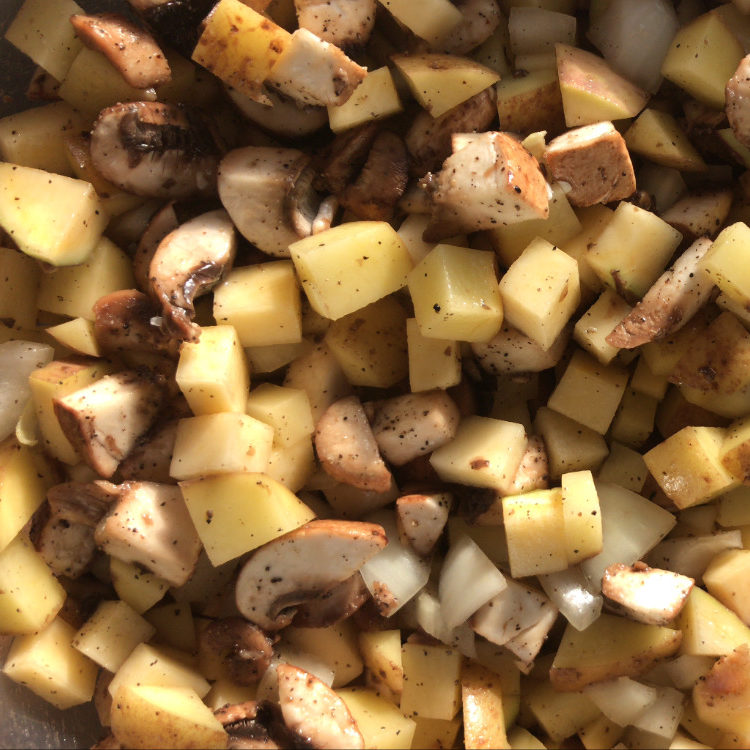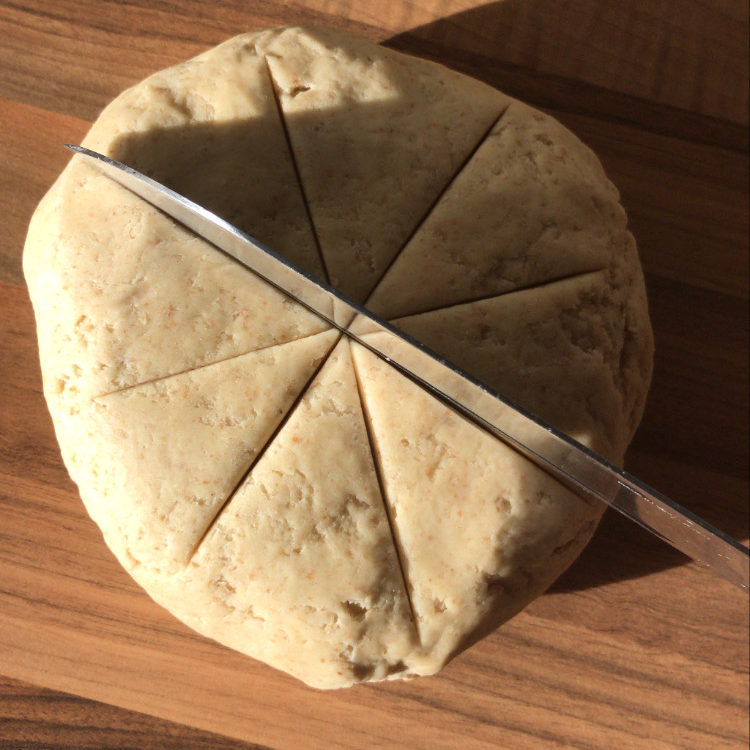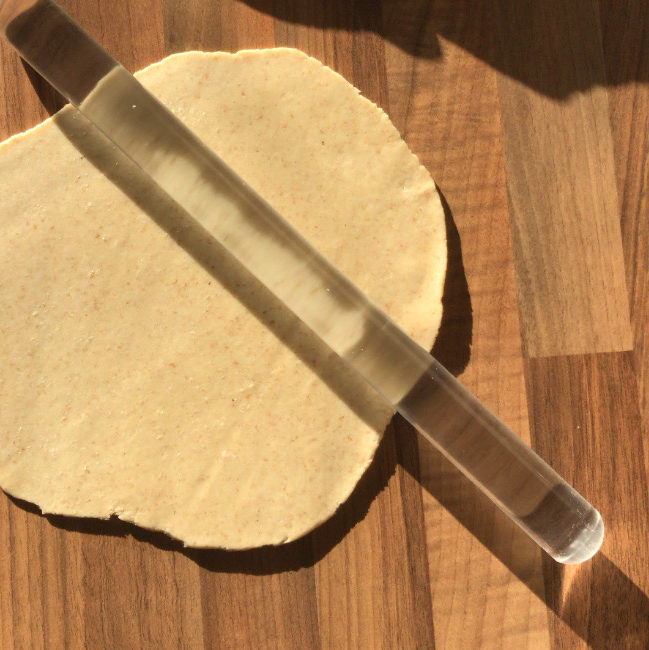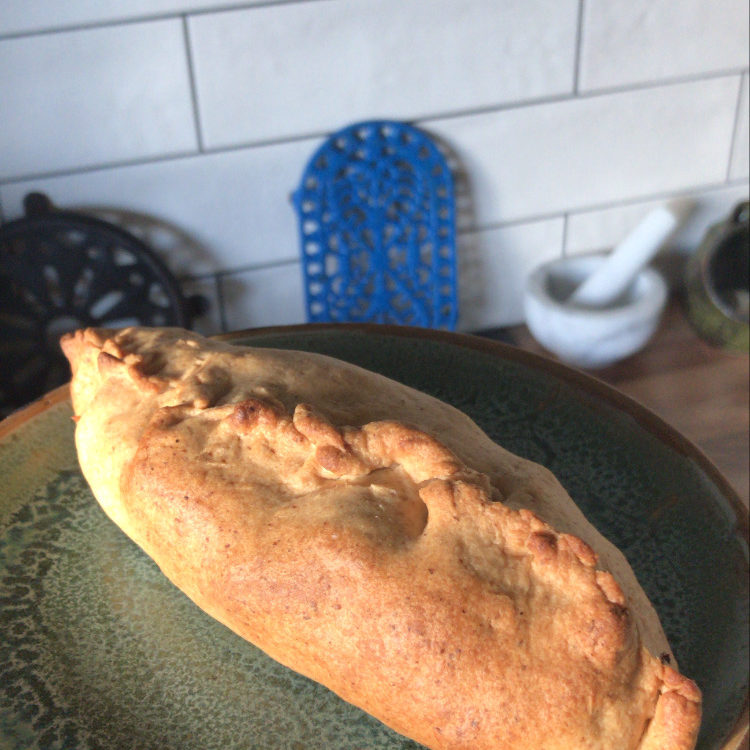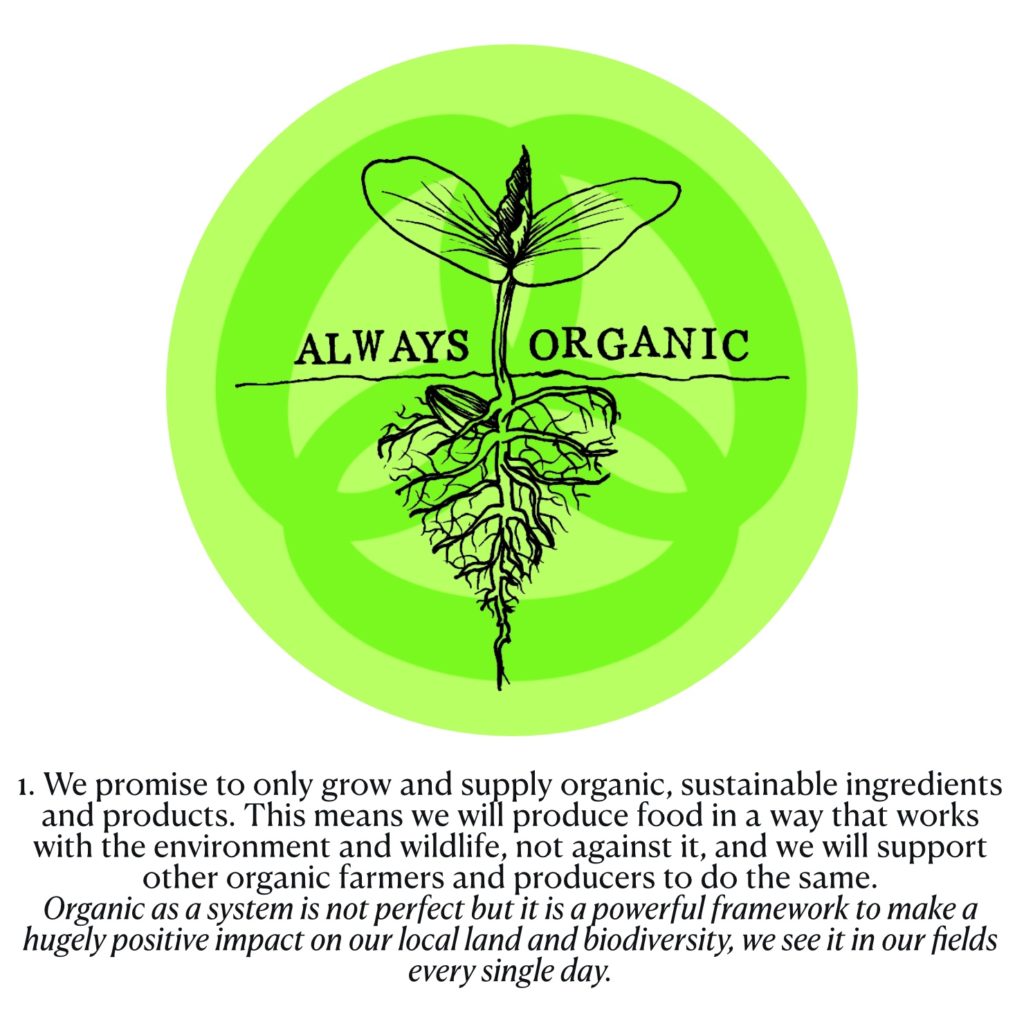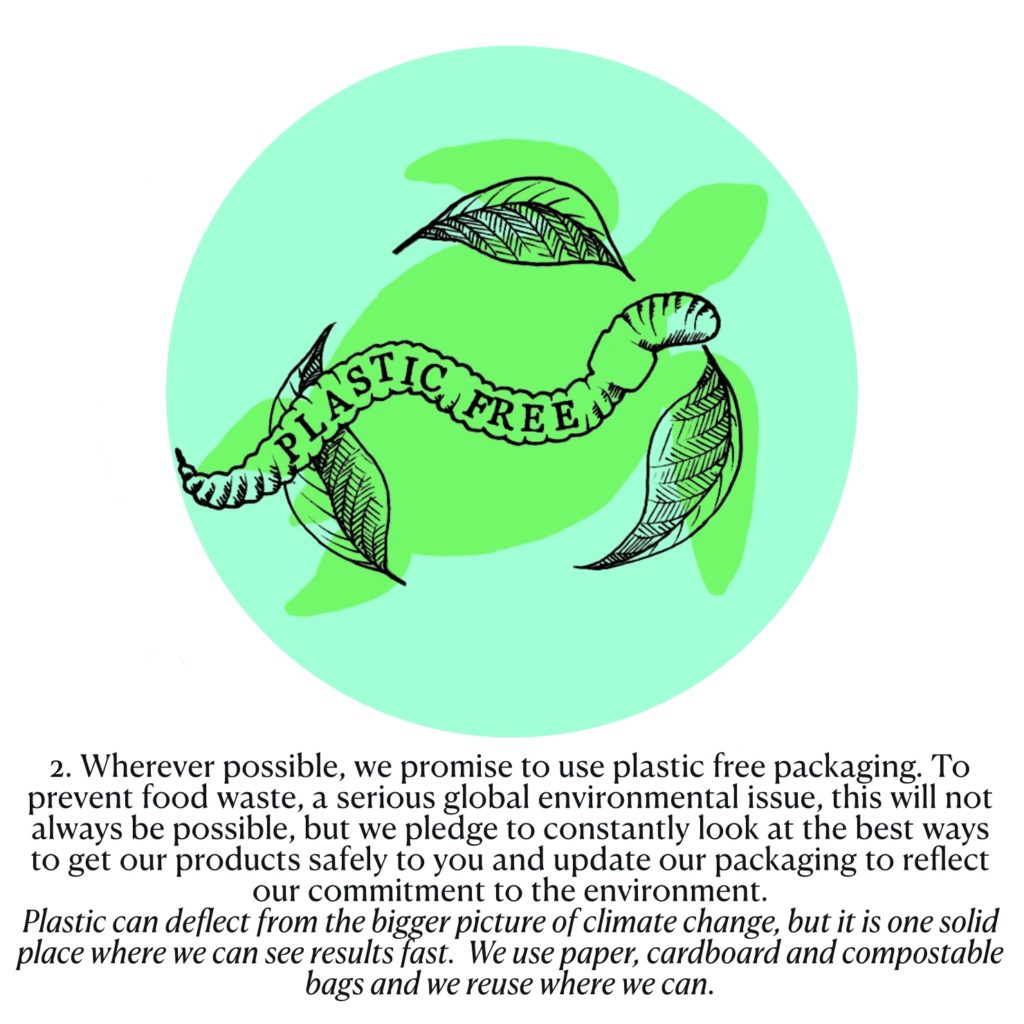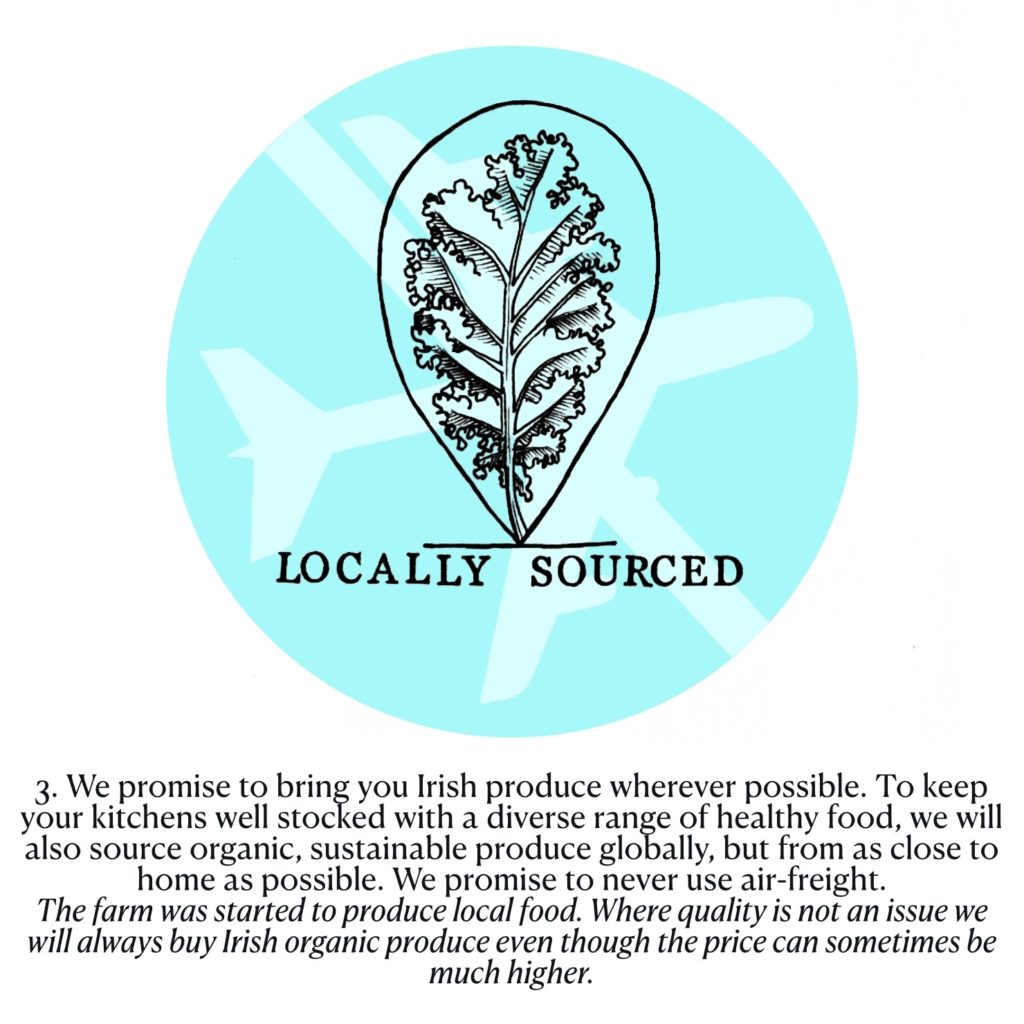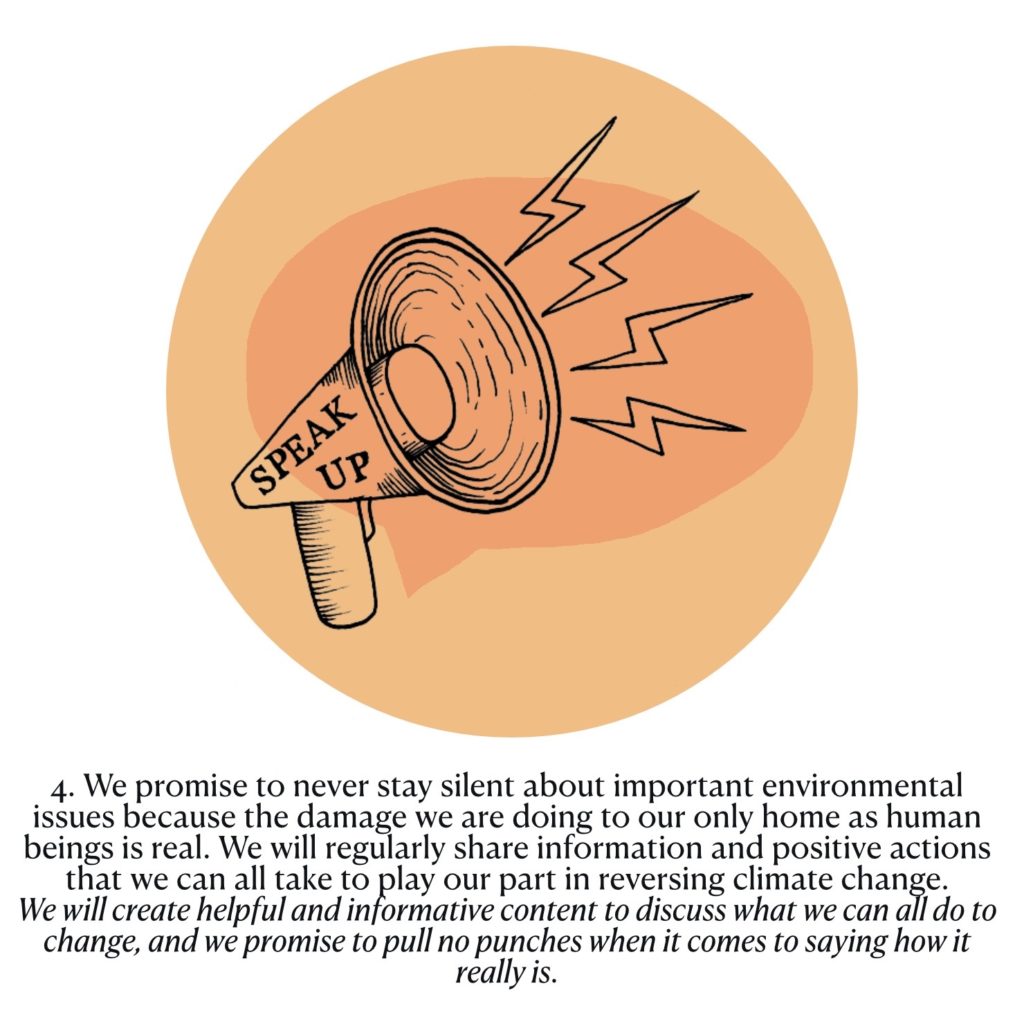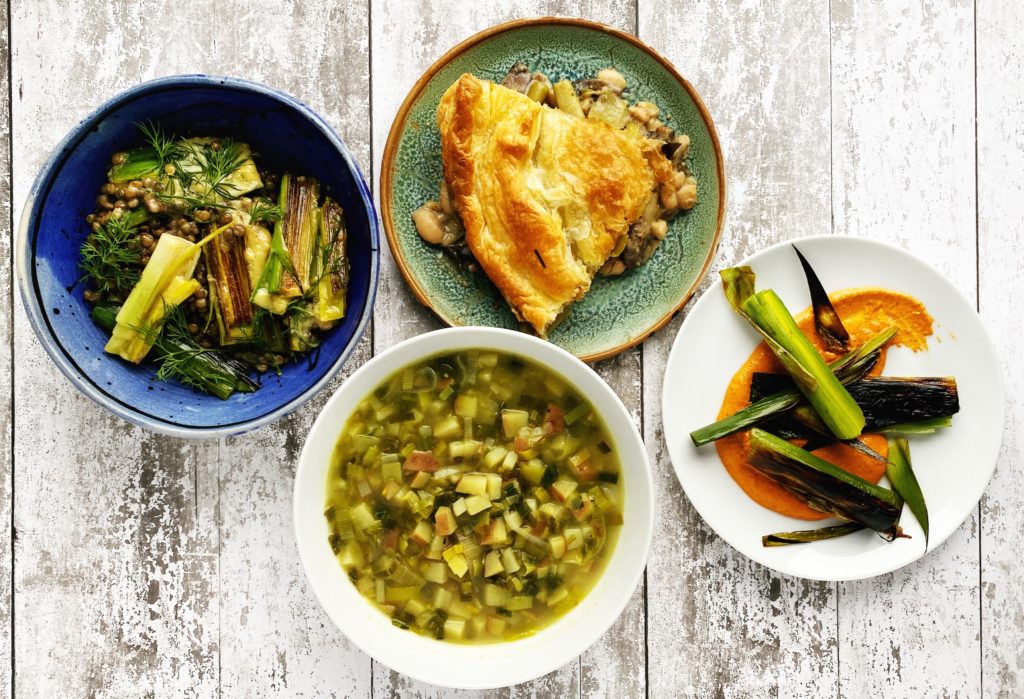
Leeks are such beautiful vegetables and they grow really well here in Ireland. Make the most of their sweet, mellow flavour by giving them the starring role on your plate. I absolutely adore them in this easy tarte tatin recipe – a must try!
As part of my ‘4 Ways With…” series, here are 4 new luscious leek recipes for you. Let us know your favourite leek recipes in the comments or over on our facebook group. We love to see what you make with our wonderful organic produce. As always, the words in bold are clickable links which will take you to our shop so that you can easily find the products to add to your order.
Liz x
Mushroom, Leek & Butterbean Pie
Ingredients (serves 4-6)
- 1 sheet of ready rolled puff pastry
- 2 tbsp of butter or oil
- 2 leeks
- 250g mushrooms
- 2 tins butterbeans
- 4 cloves of garlic
- 6 springs of thyme
- 1 tbsp wholegrain mustard
- half glass of white wine or a tiny splash of apple cider vinegar
- 2 tbsp flour
- large handful nutritional yeast
- oat milk
- salt and pepper to taste
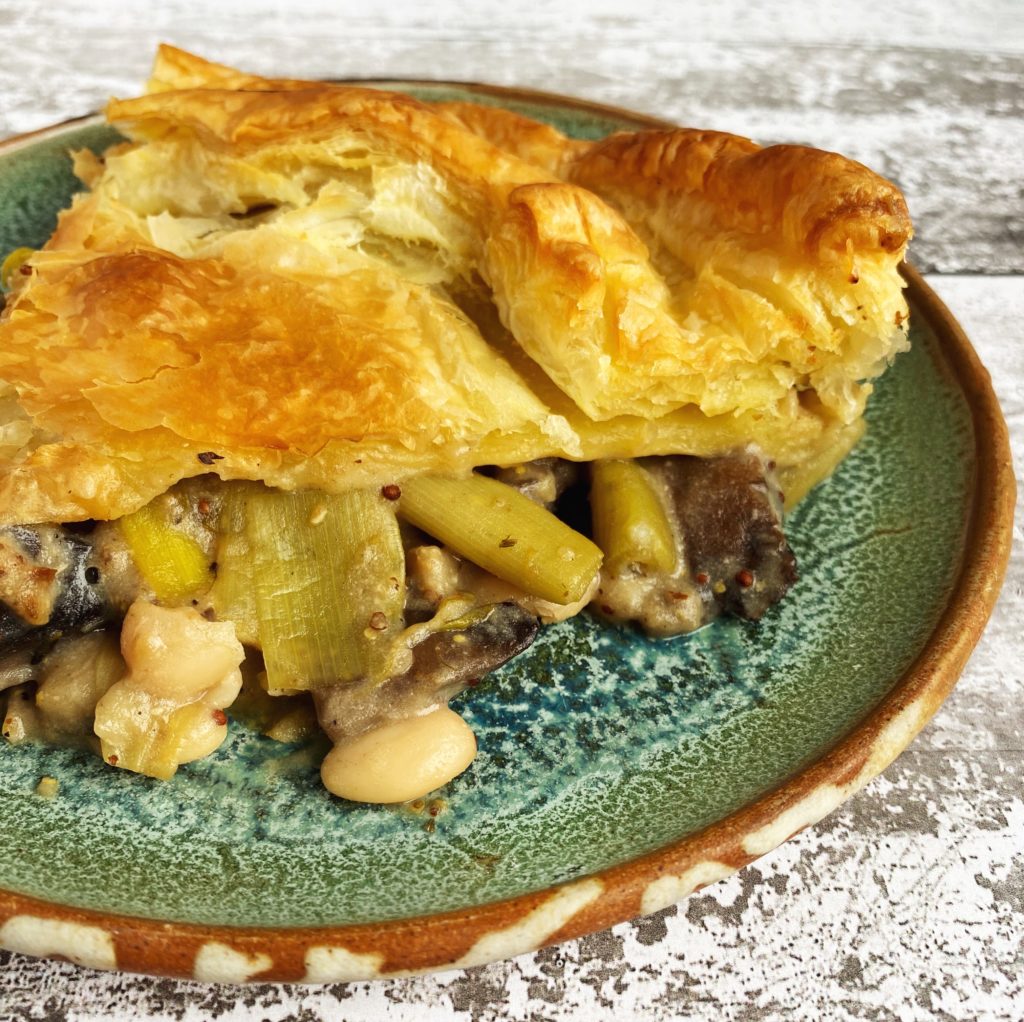
Method
Pre-heat the oven to 200C. Split the leeks in half, lengthways, keeping them intact at the base. Run them under a tap and rinse out all the mud between the layers.
Slice the dark green part of the leeks into 1-2cm chunks and the mushrooms into halves or quarters and sauté with the butter or oil and a pinch of salt.
When the mushrooms and dark greens have started to cook down a little, slice the pale part of the leeks and add that to the pan too with an extra pinch of salt.
Peel and slice the garlic cloves and pull off the thyme leaves and add them to the pan too. Sauté gently for around 10 minutes or until very fragrant and the vegetables are softened and mostly cooked through.
Add the mustard and either a half glass of white wine or a tiny splash of vinegar and stir well.
Sprinkle in the flour and nutritional yeast, stir to coat the vegetables, and then add generous splashes of oat milk and keep stirring and cooking out the flour until you get to to a silky, creamy consistency.
Taste and adjust the seasoning with pepper and more salt as needed. Then drain the butterbeans (reserve the aquafaba for mayonnaise or clafoutis) and add them to the pie filling.
Then either tip the filling into a pie dish and cover quickly with pastry or pop the pastry straight onto your pan if it is oven and hob safe. Work to get the pie in the oven quickly if your filling is still hot otherwise the pastry will melt.
Put the pie into the oven for about 25 minutes or until the pastry is cooked through and the filling is bubbling. Slice into wedges and serve with steamed greens and some extra wholegrain mustard on the side.
Leek & Potato Soup
Ingredients (serves 2 or 4 as starters)
- 1 tbsp butter or oil
- 1 leek
- 2 large potatoes
- 1 stock cube
- 1/2 a lemon
- salt and pepper to taste
- *optional extras – garlic, celery, carrot, fresh herbs, a tin of chickpeas/white beans…
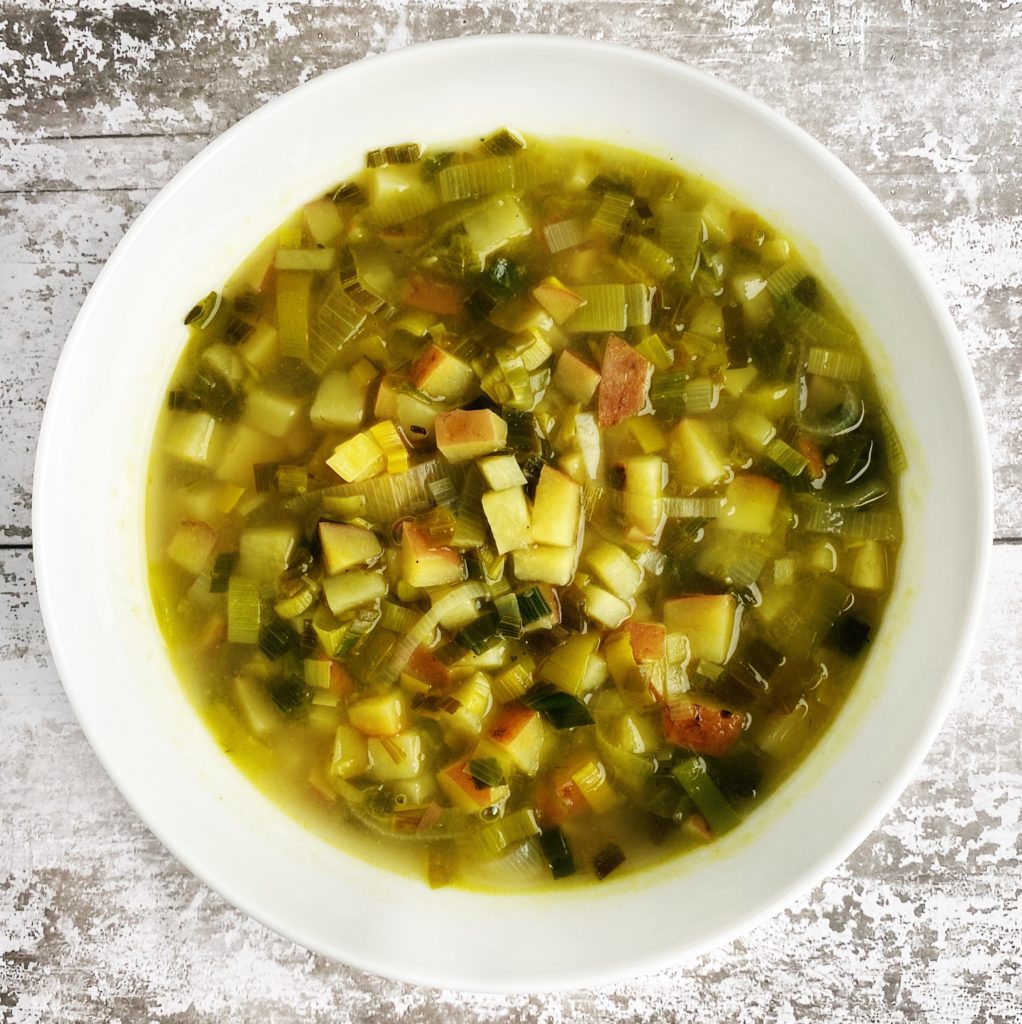
Method
Leek and potato soup couldn’t be simpler and it’s my kids favourite soup. They like it left chunky and brothy like in the photo, but it’s delicious blended smooth too.
Sauté the green part of the leek (thinly sliced) in the oil/butter with diced potatoes until softening – about 8 minutes.
Add the thinly sliced paler part of the leek, optional extras like garlic, thyme, rosemary, diced celery or carrots etc and sauté for a few more minutes.
Add a stock cube and cover the vegetables with hot water.
Simmer until the potatoes are cooked through. Then either leave chunky or blend until smooth.
Taste and adjust the seasoning. I always like a squeeze of fresh lemon juice and some freshly ground black pepper in my soup to brighten and lift the flavours.
*Bulk it out and add some plant protein with a drained tin of chickpeas or white beans simmered into the soup.
Leeks Vinaigrette with Lentils & Herbs
Ingredients (serves 2 or 4 as a side)
- 1 leek
- 1 tbsp oil or butter
- 1 tin of green lentils (or cook dried lentils from scratch)
- 6 tbsp olive oil
- 2 tbsp vinegar
- 1 tbsp dijon mustard
- salt to taste
- fresh herbs (tarragon or dill go really well here)
- *optional extras – toasted nuts or seeds, capers, olives…
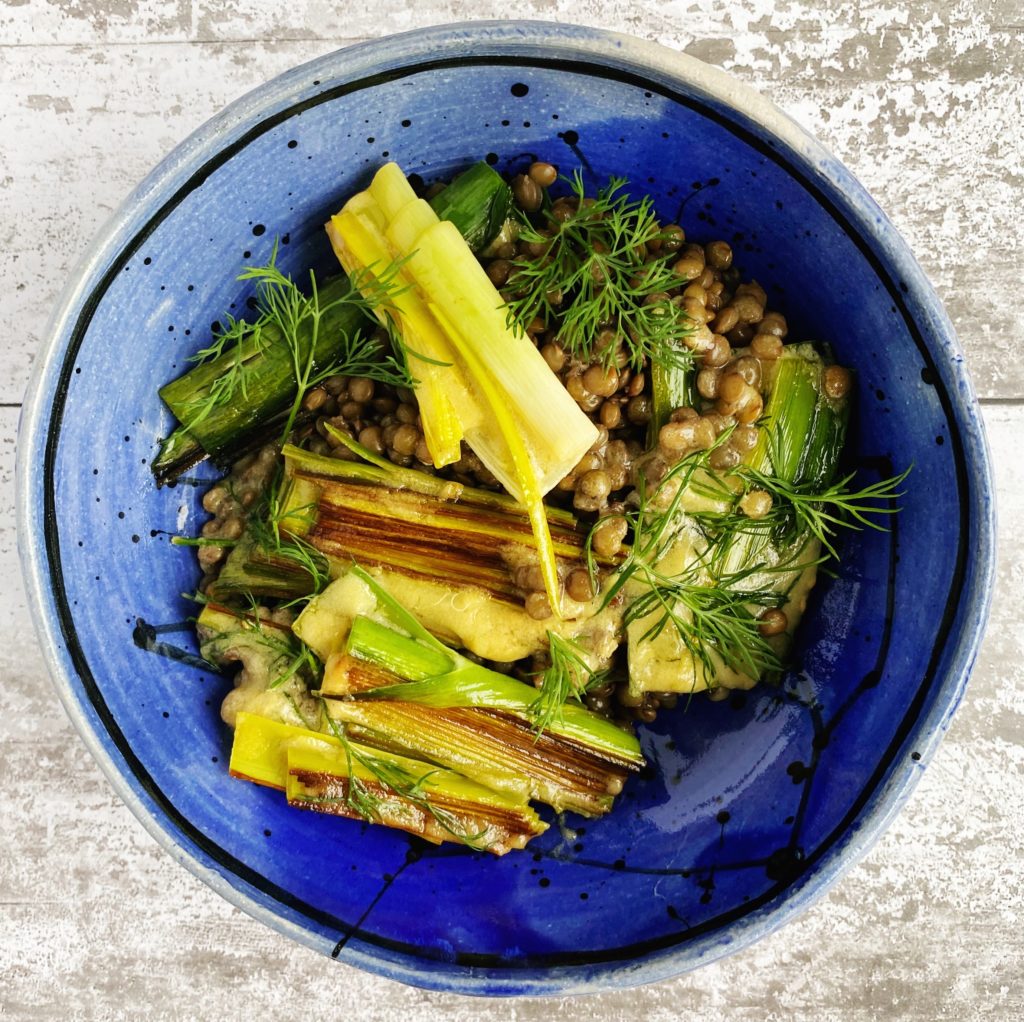
Method
Traditionally, leeks are boiled in salted water then cooled and drained before dressing with a classic vinaigrette. I like to half sauté and half steam my leeks to add a little caramelised colour to the dish.
Split and wash the leeks, keeping them intact at the root end. Then cut into long chunks, about the length of your index finger.
Place the leeks – beautiful, stripy, cut side down – in a hot frying pan with the butter or oil. Sprinkle over a pinch of salt and allow the leeks to take on some colour. Don’t move them around in the pan, let them sit in one delicate piece. Then after about 4 minutes, put the lid on the frying pan and allow the leeks to steam in their own juices. You may wish to turn the heat down to medium at this stage.
Test that they are cooked through with a small, sharp knife. Then plate them up.
Put the cooked lentils into a large bowl or platter (drain the tin or simmer dried lentils in stock until soft). Make a classic vinaigrette by mixing the olive oil, vinegar and dijon mustard with a pinch of salt.
Arrange the leeks on top of the lentils and drench with the vinaigrette. Then scatter over some freshly picked tarragon or dill and enjoy with some fresh, crusty bread and a crisp glass of white wine.
*Sprinkle over some toasted walnuts or other nuts or seeds you like or some salty capers or green olives to give the salad an extra dimension.
Charred Leeks with Romesco Sauce
Ingredients (serves 2)
- 2 leeks
- 1 tbsp olive oil
- 1 roasted red pepper (from a jar, or roast and peel your own)
- 1 small garlic clove or half of one
- a large handful or so of toasted almonds (place the almonds in a small tin in a hot oven for 5 minutes or until toasted)
- 1 tbsp sherry/red-wine vinegar
- 2 tbsp extra virgin olive oil
- salt to taste
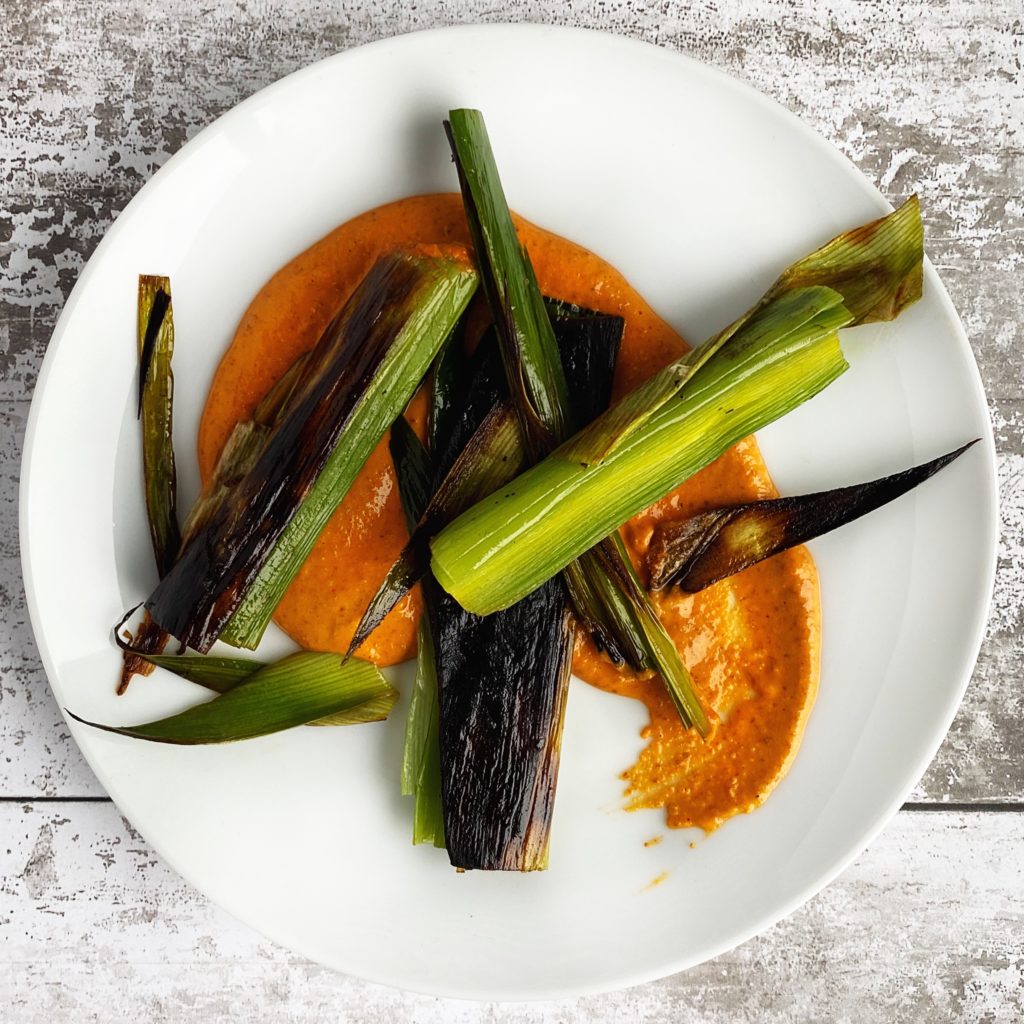
Method
This recipe is my nod to the Catalonian calçot festival which I have never been to but have high on my bucket list. Calçots are extraordinary vegetables, somewhere between a small leek and a large scallion, so leeks work really well as an alternative. Traditionally calçots are grilled over open flame until blackened on the outside and perfectly sweet, smokey and juicy inside. Then they are wrapped in newspaper and left to rest. They are delightfully messy to eat. Peel off the burnt outer layer, dunk the sweet middle in nutty romesco sauce and lower the sweet, tender vegetable into your mouth and enjoy.
My version with leeks is so delicious, you’ve just got to try it! I love this messy meal with some really good bread to mop up the juices and a large glass of red wine. We sell some excellent organic Spanish wines which would go perfectly.
Make the romesco sauce by blending the almonds, red pepper, garlic, olive oil and vinegar into a semi-smooth sauce. Taste and season with a big pinch of salt.
Split and rinse the leeks, leaving the roots intact. Then slice them into long pieces, carefully keeping the layers all together.
Carefully put them in a large, hot frying pan with some olive oil and a sprinkle of salt and allow them to take on a good amount of colour before covering the pan with a lid and steaming them in their own juices until soft.
They should be soft all the way through and the burnt edges should contrast beautifully with the sweet, silky middles.
Spread some romesco sauce on a large platter, then place the hot leeks on top and eat them immediately. Scoop them up with a fork or your hands and finish off the sauce with torn chunks of bread. Absolutely delicious!


